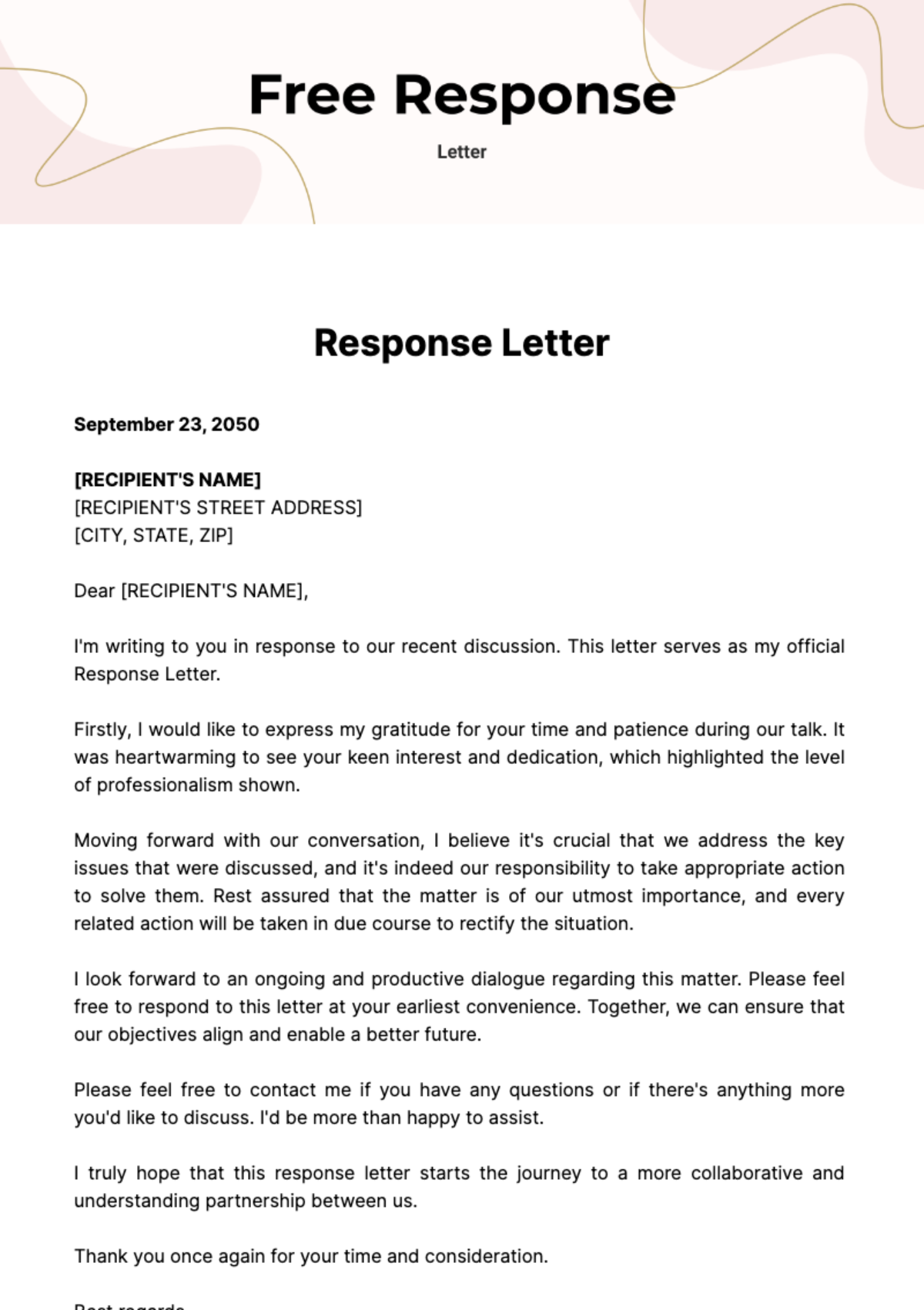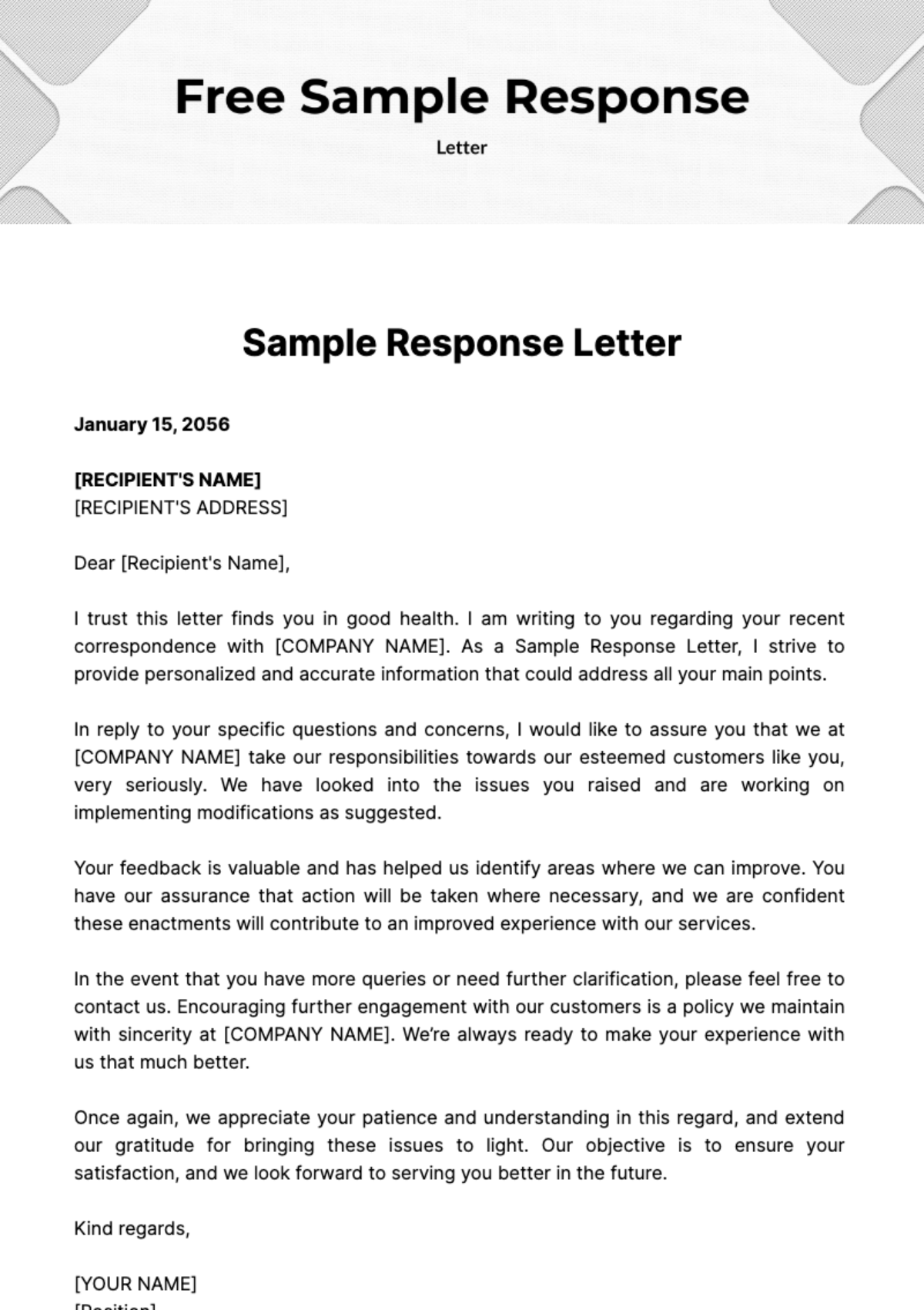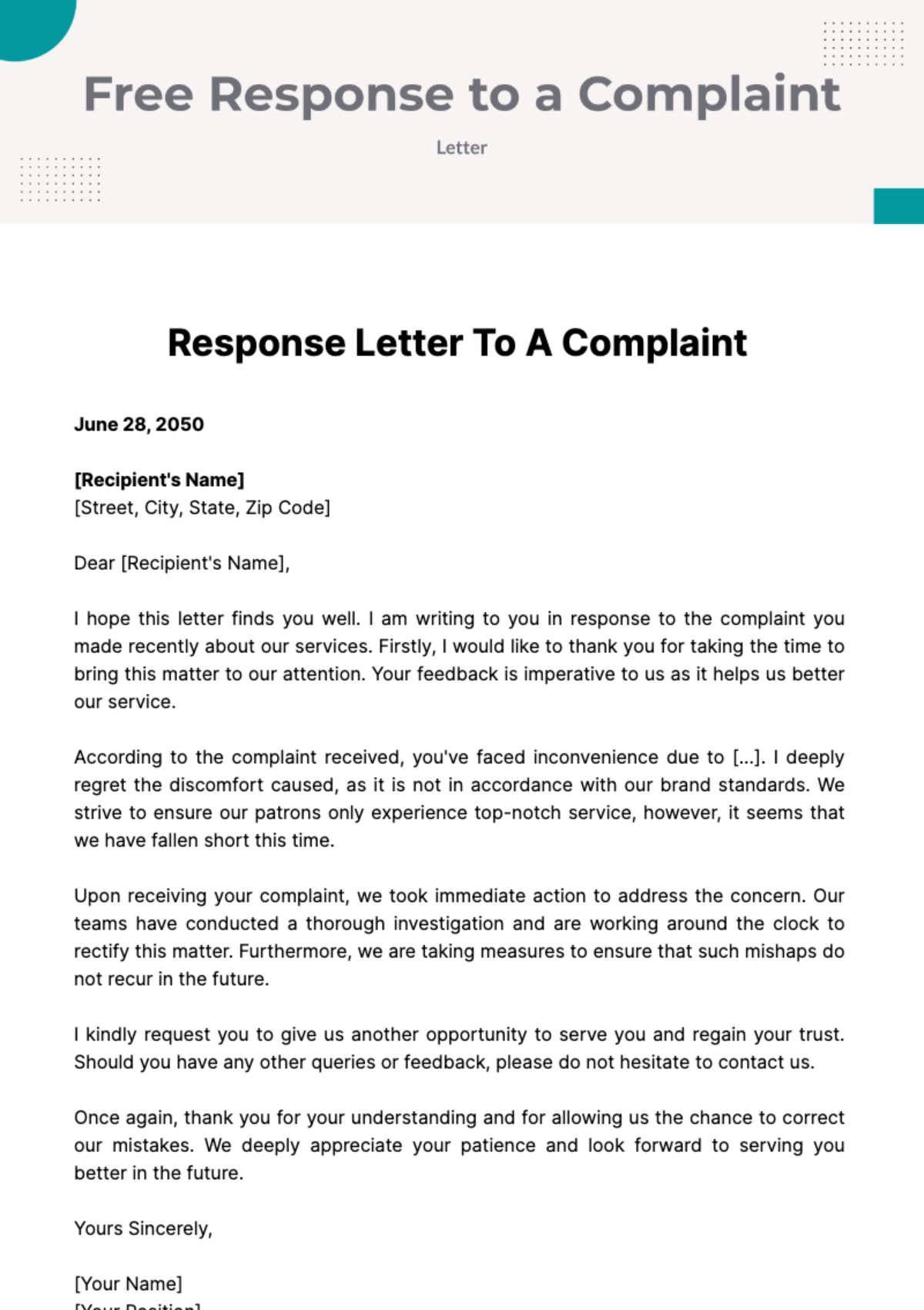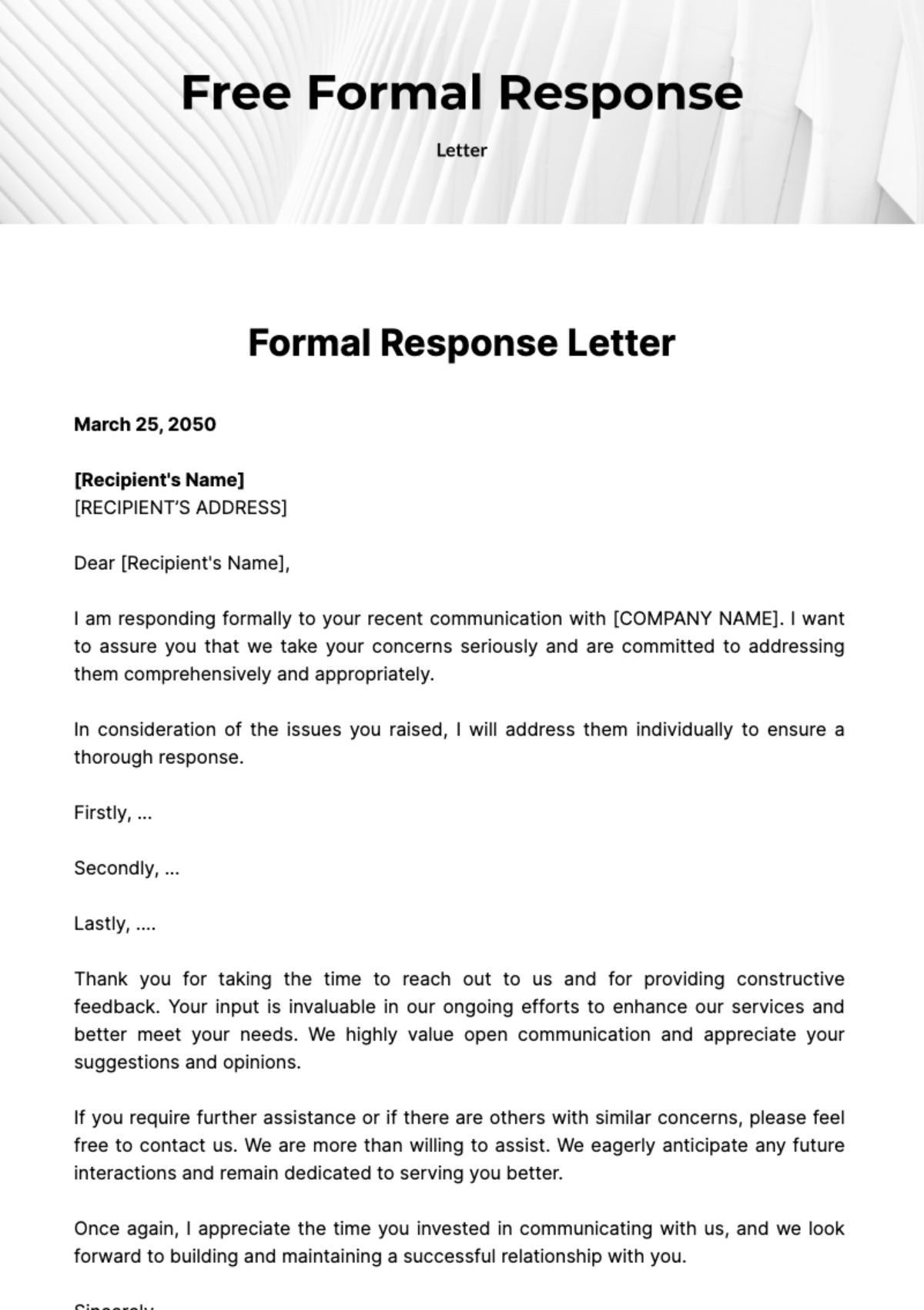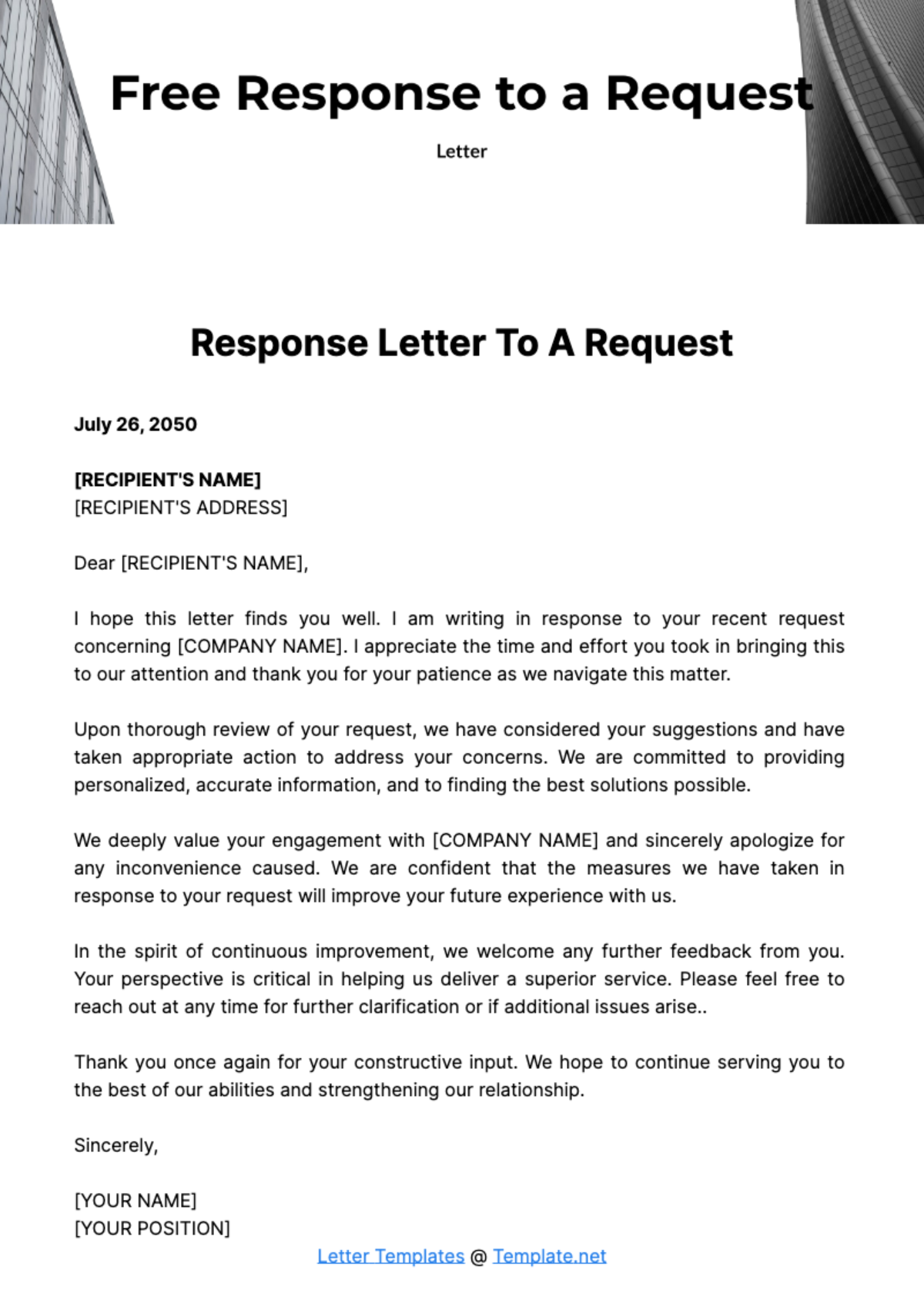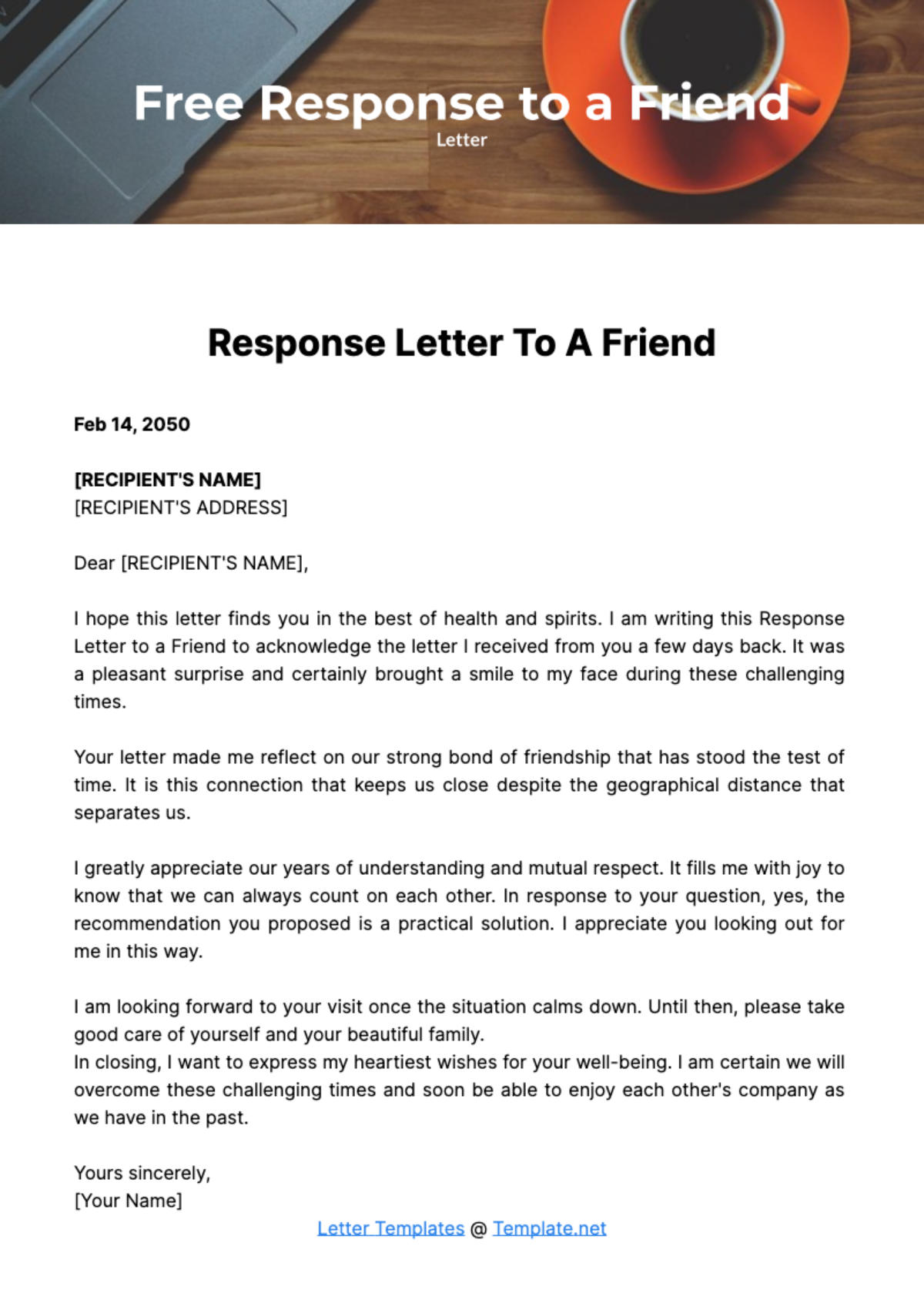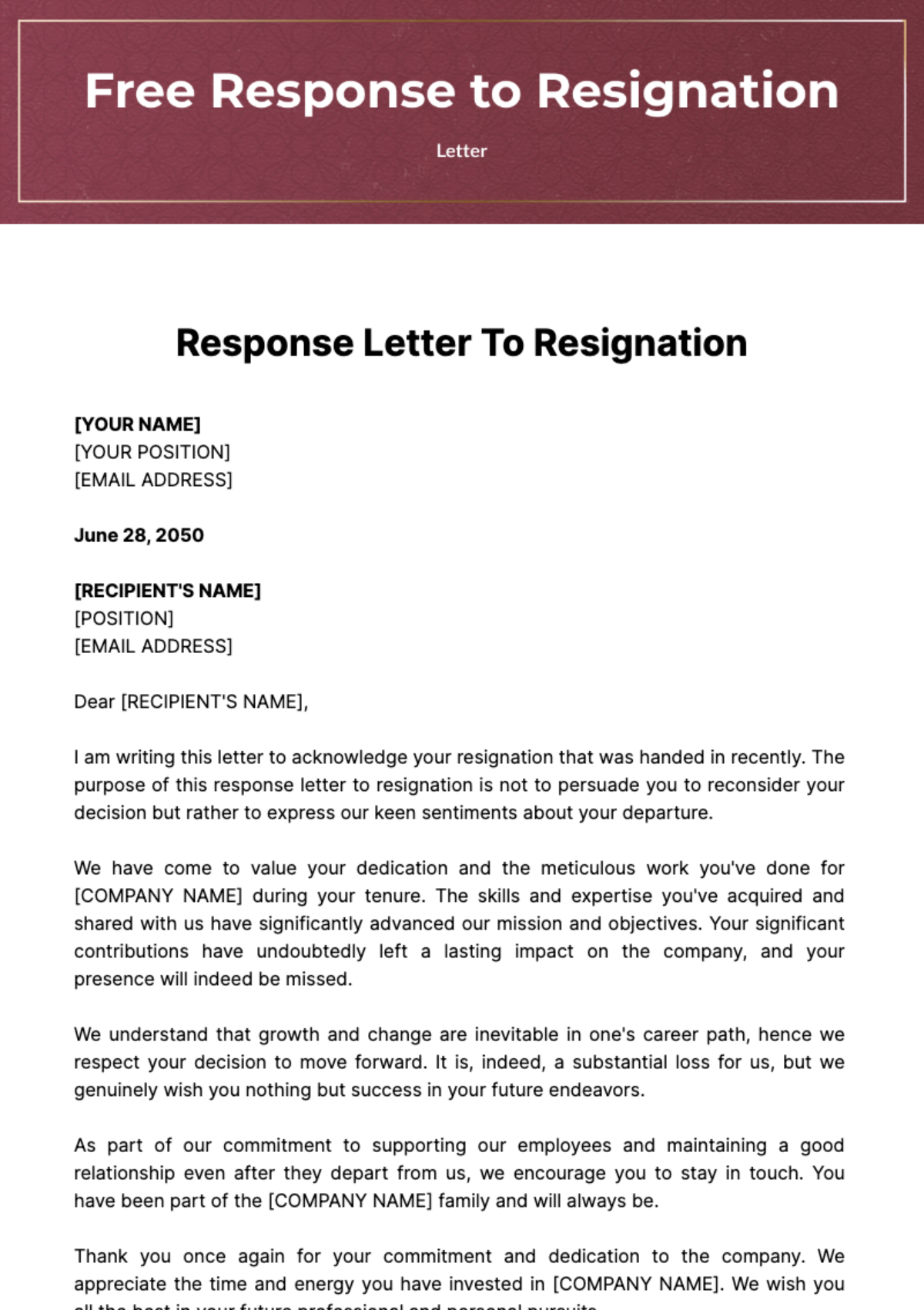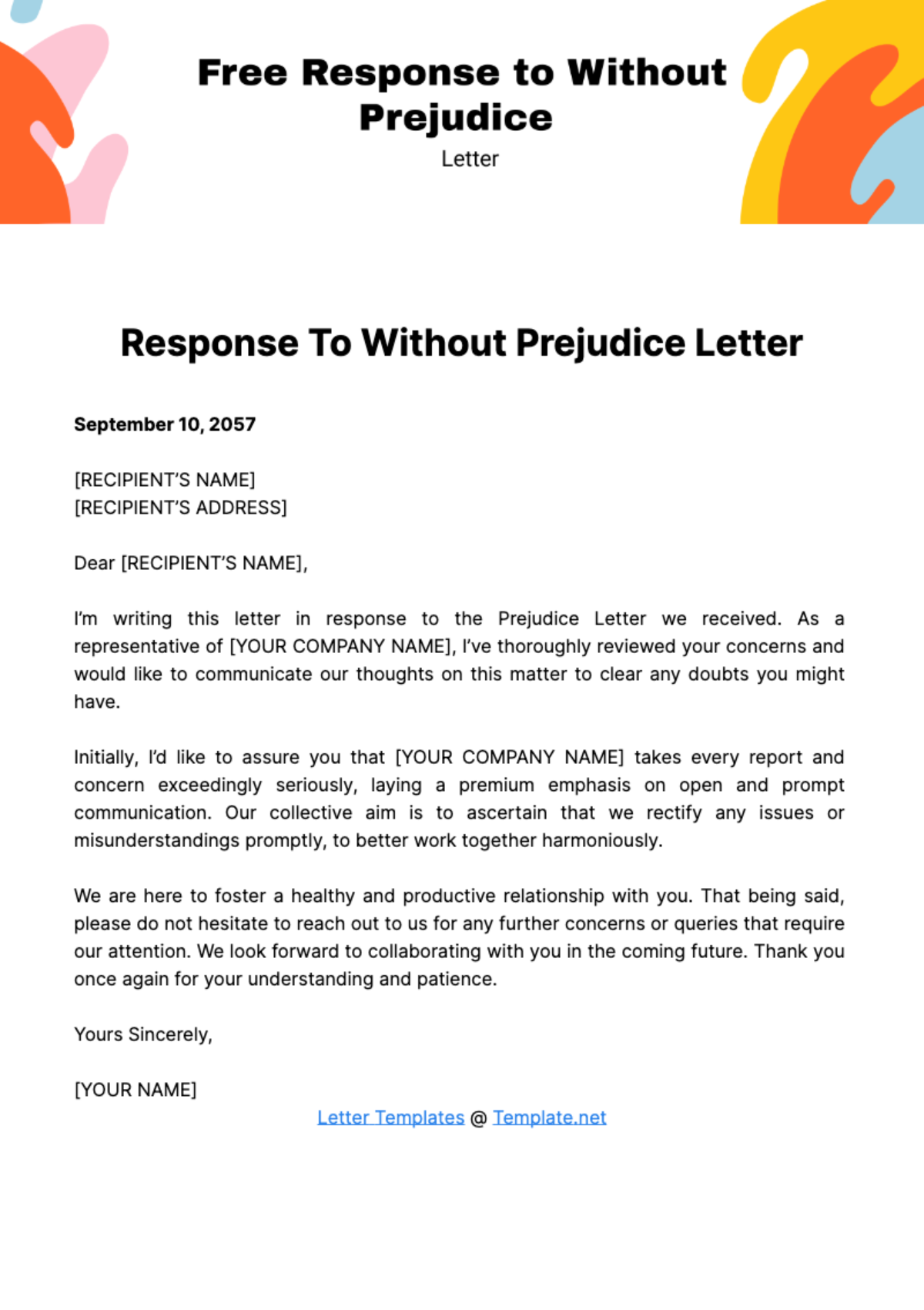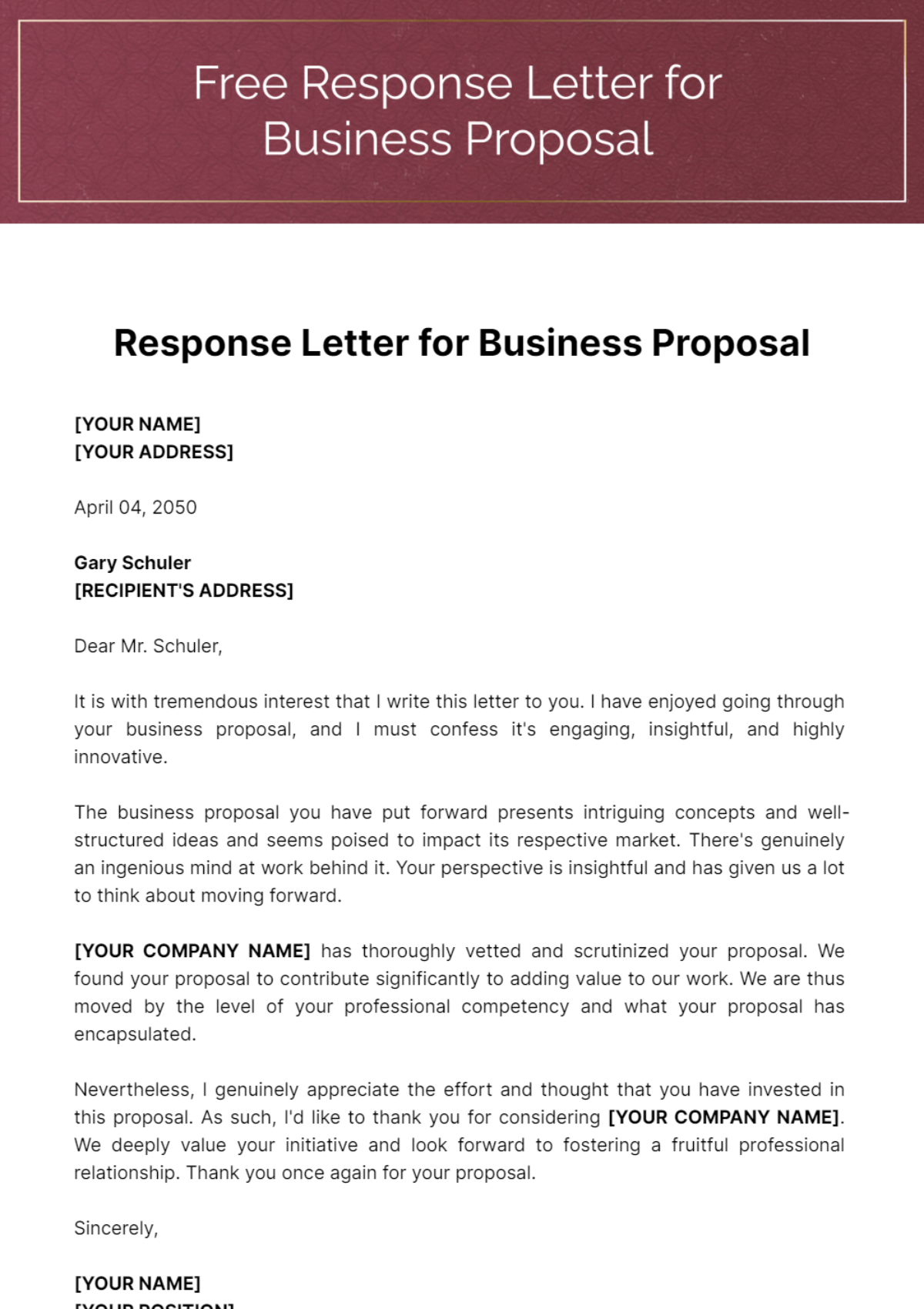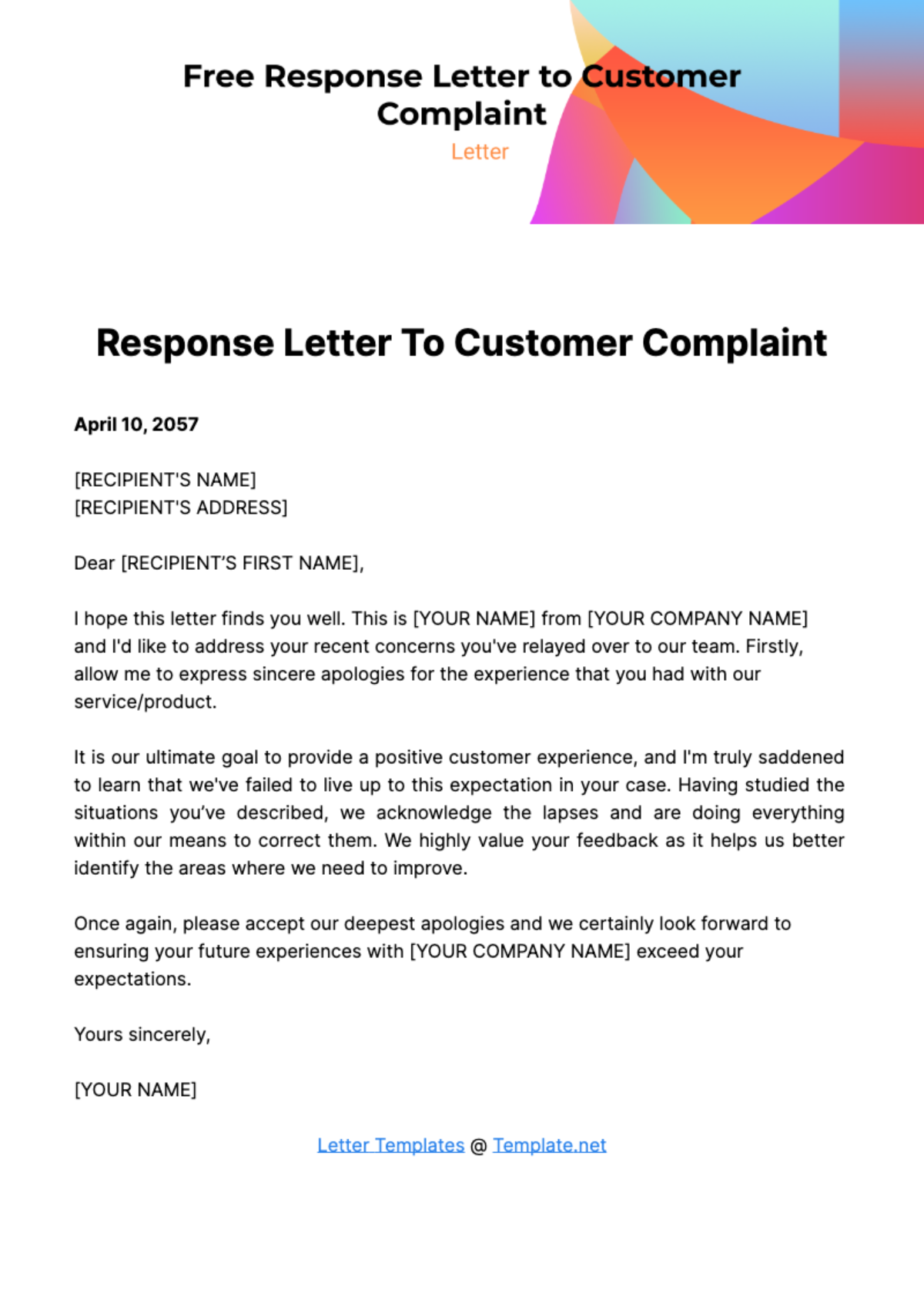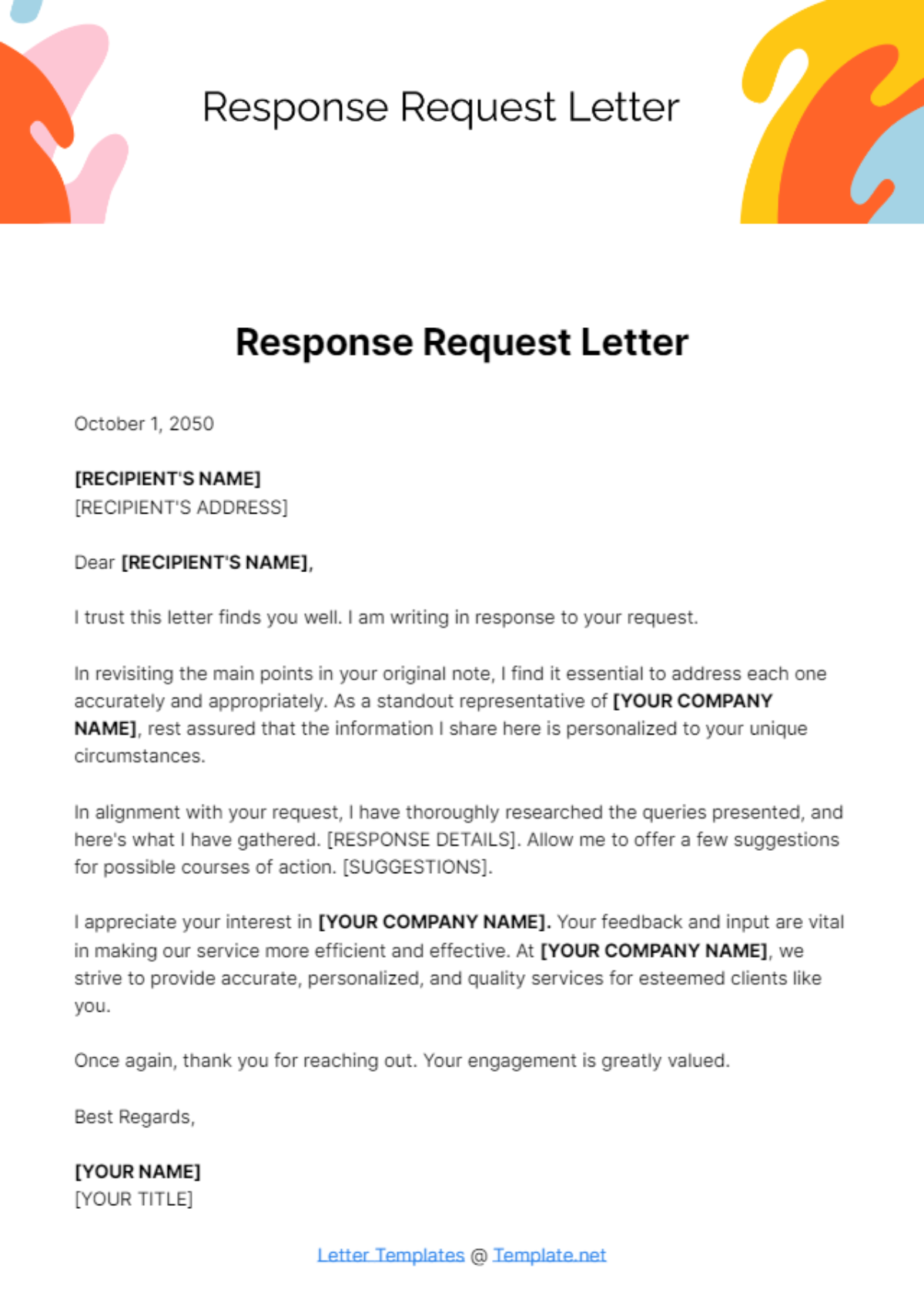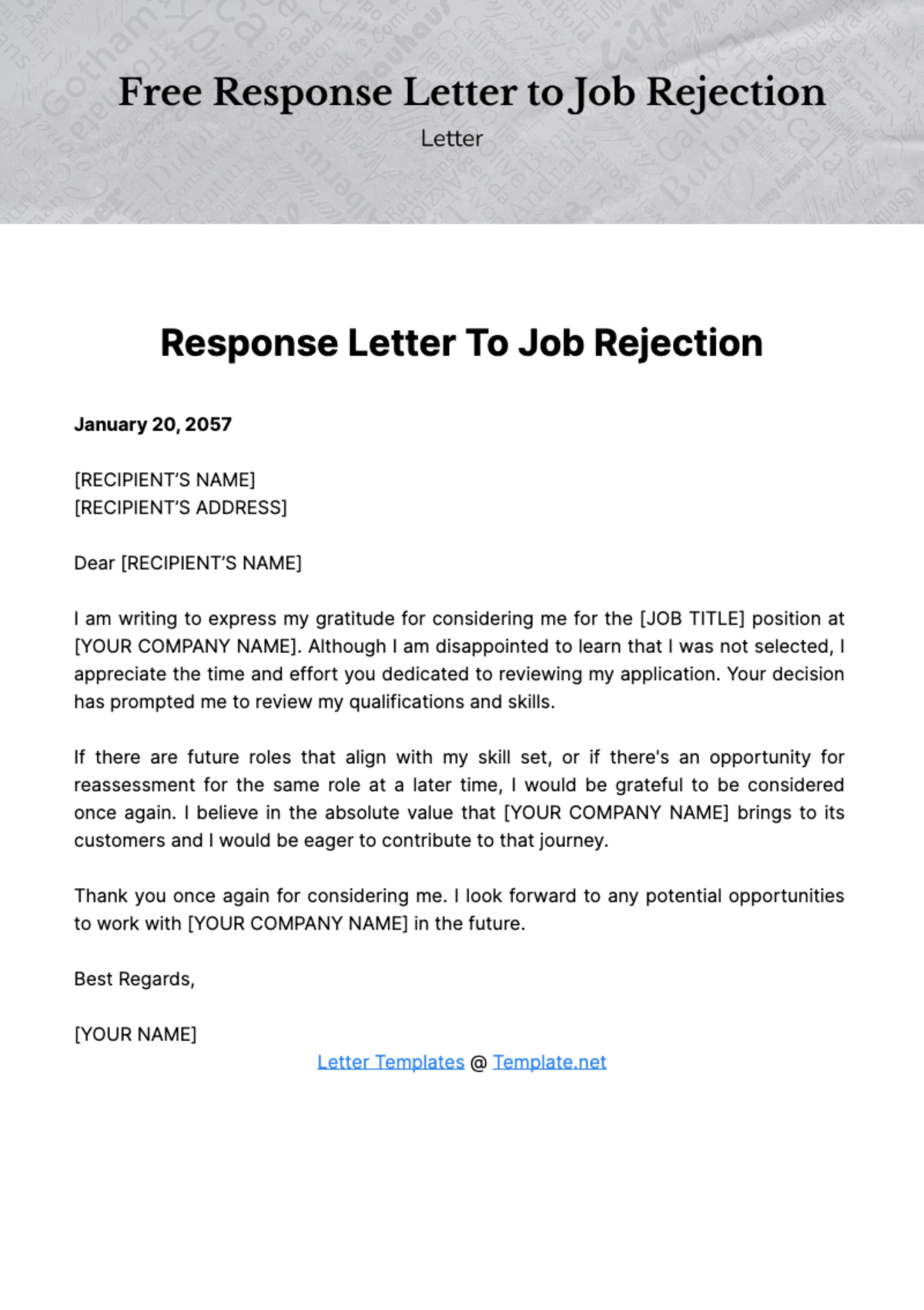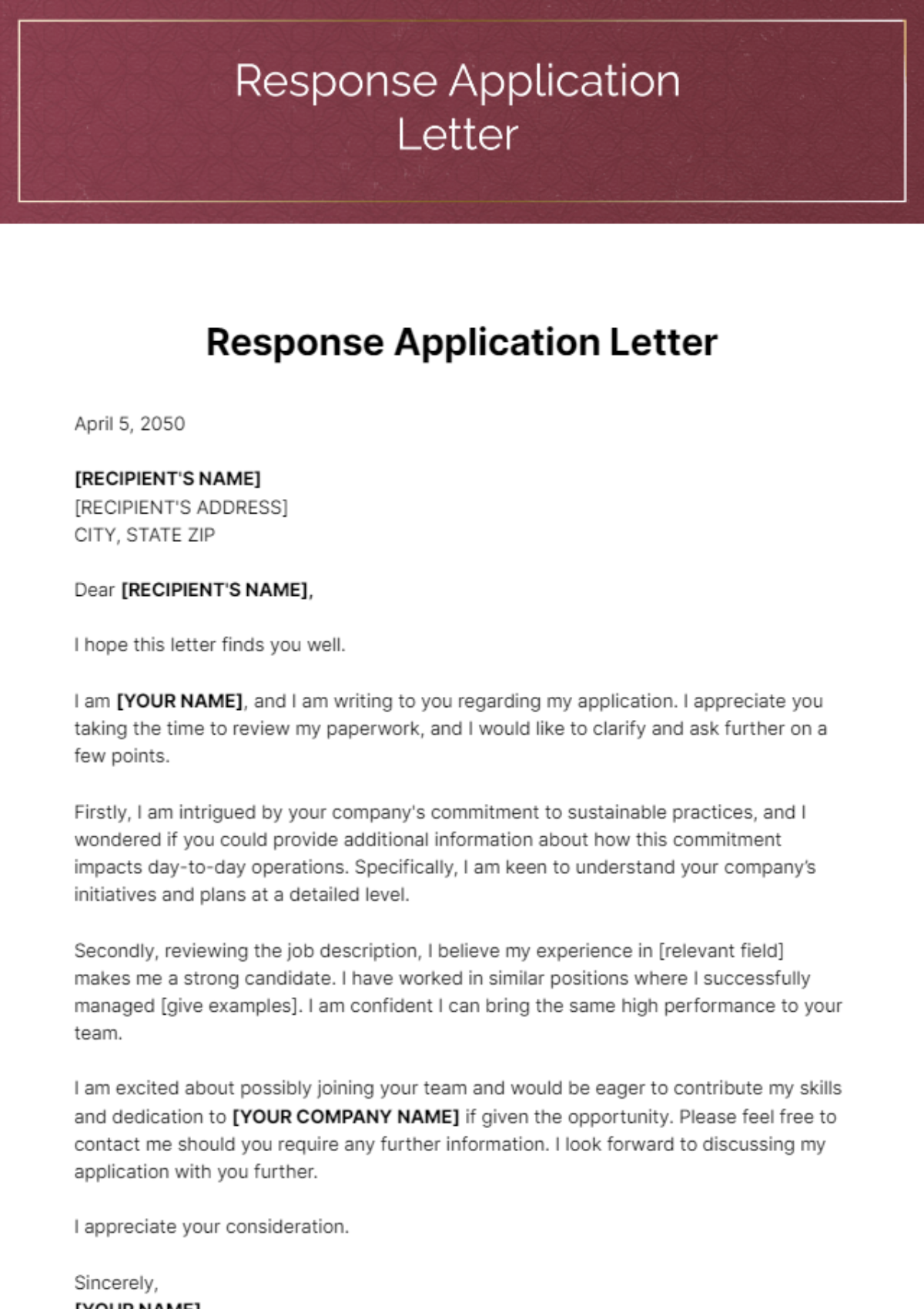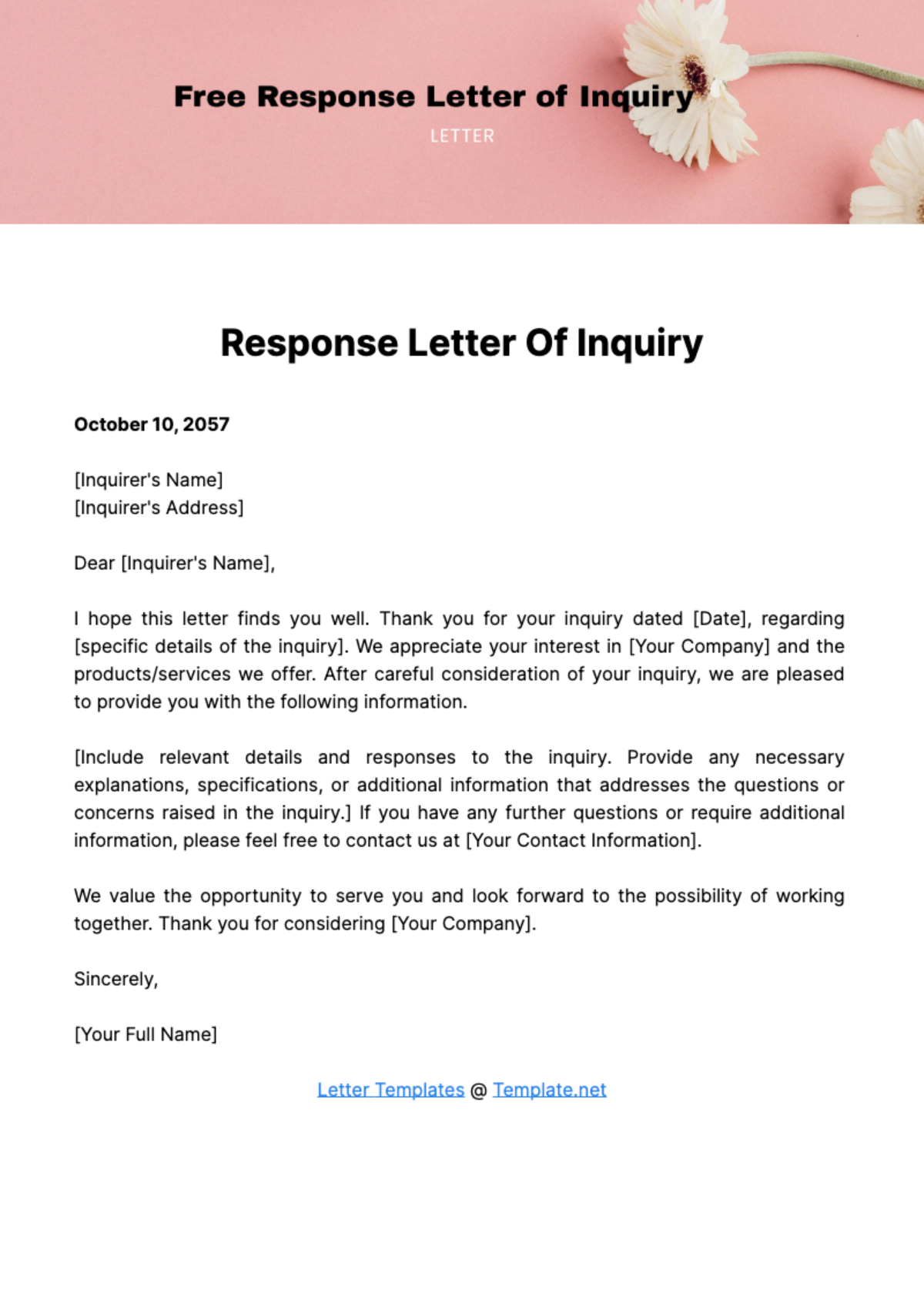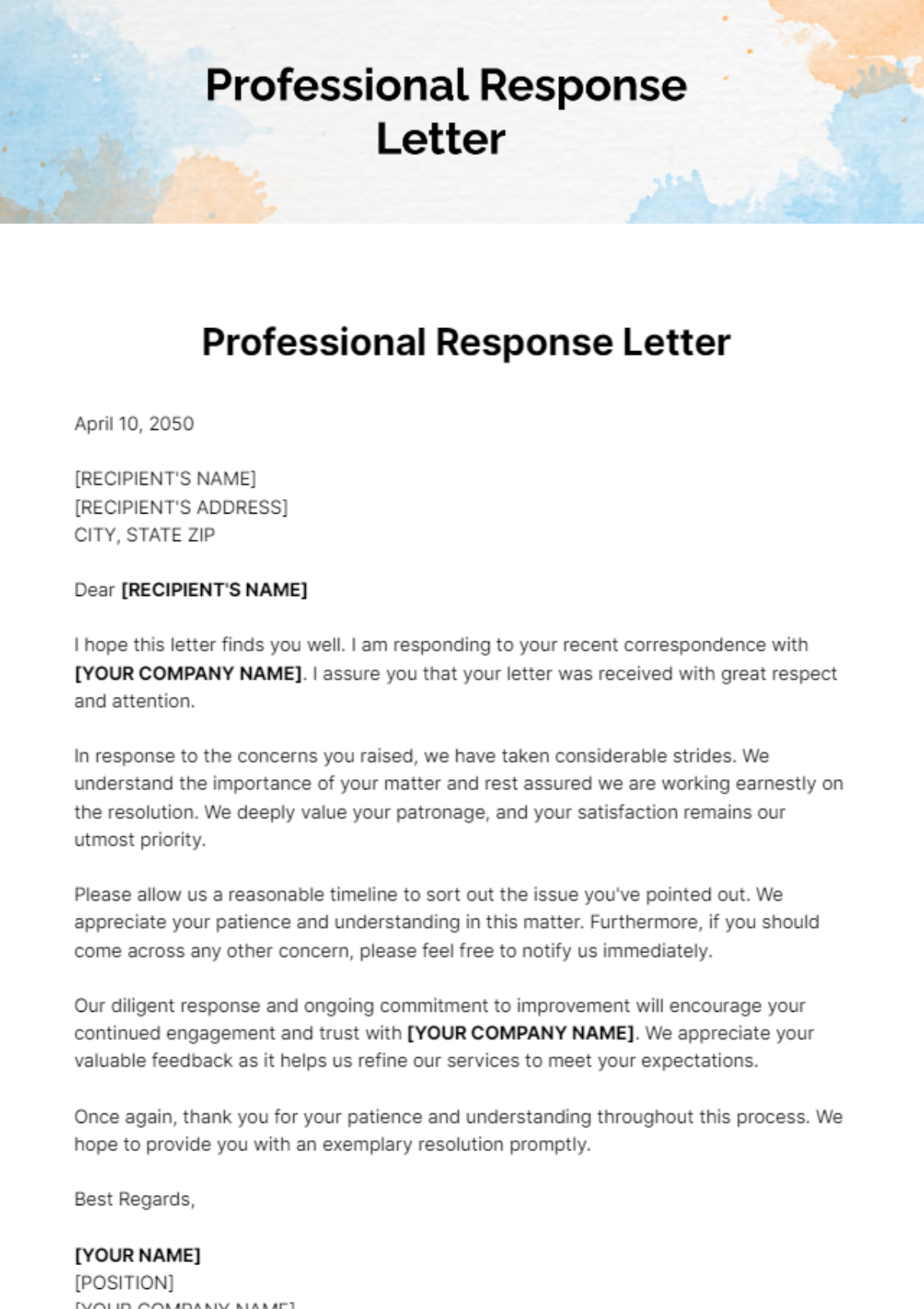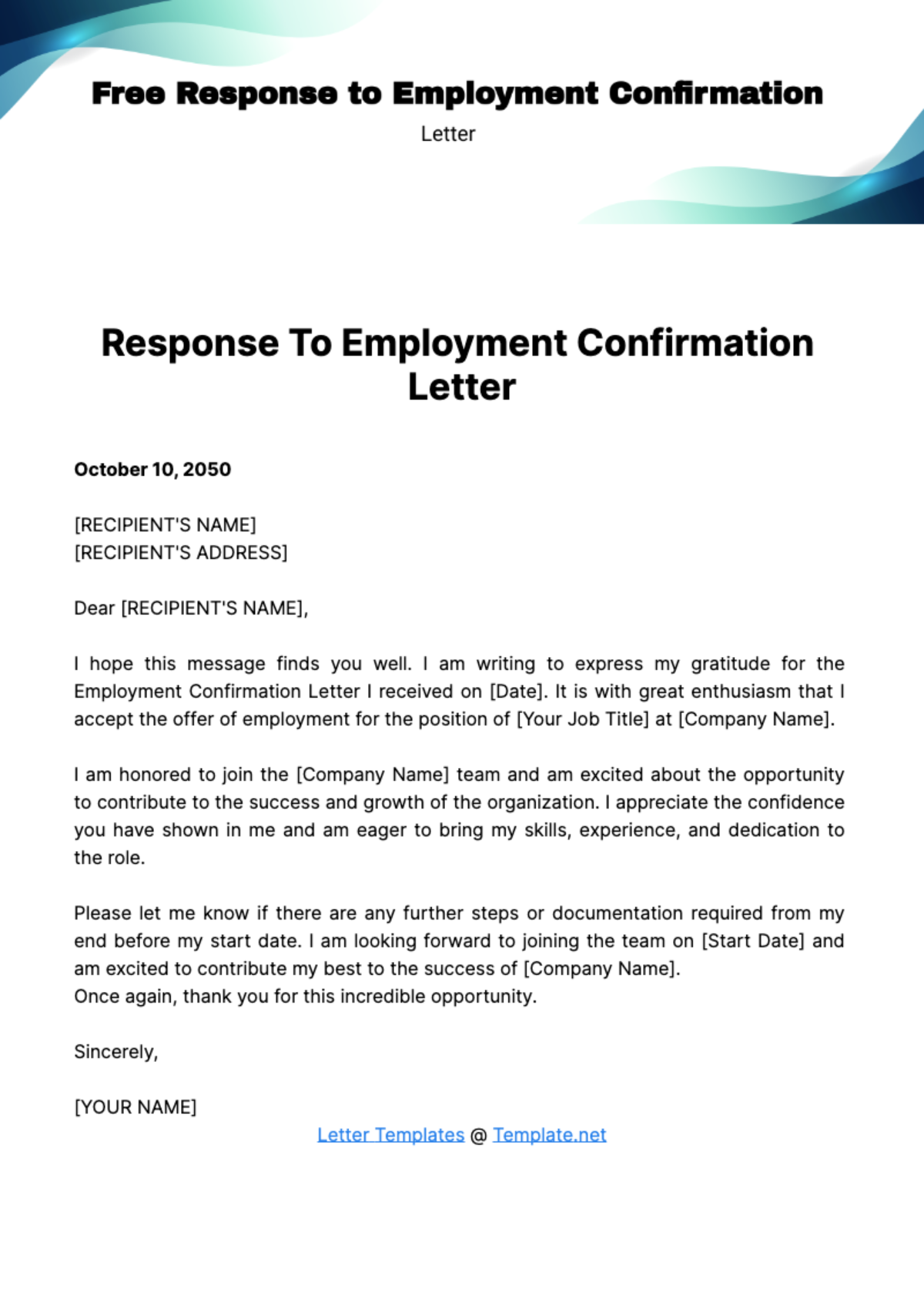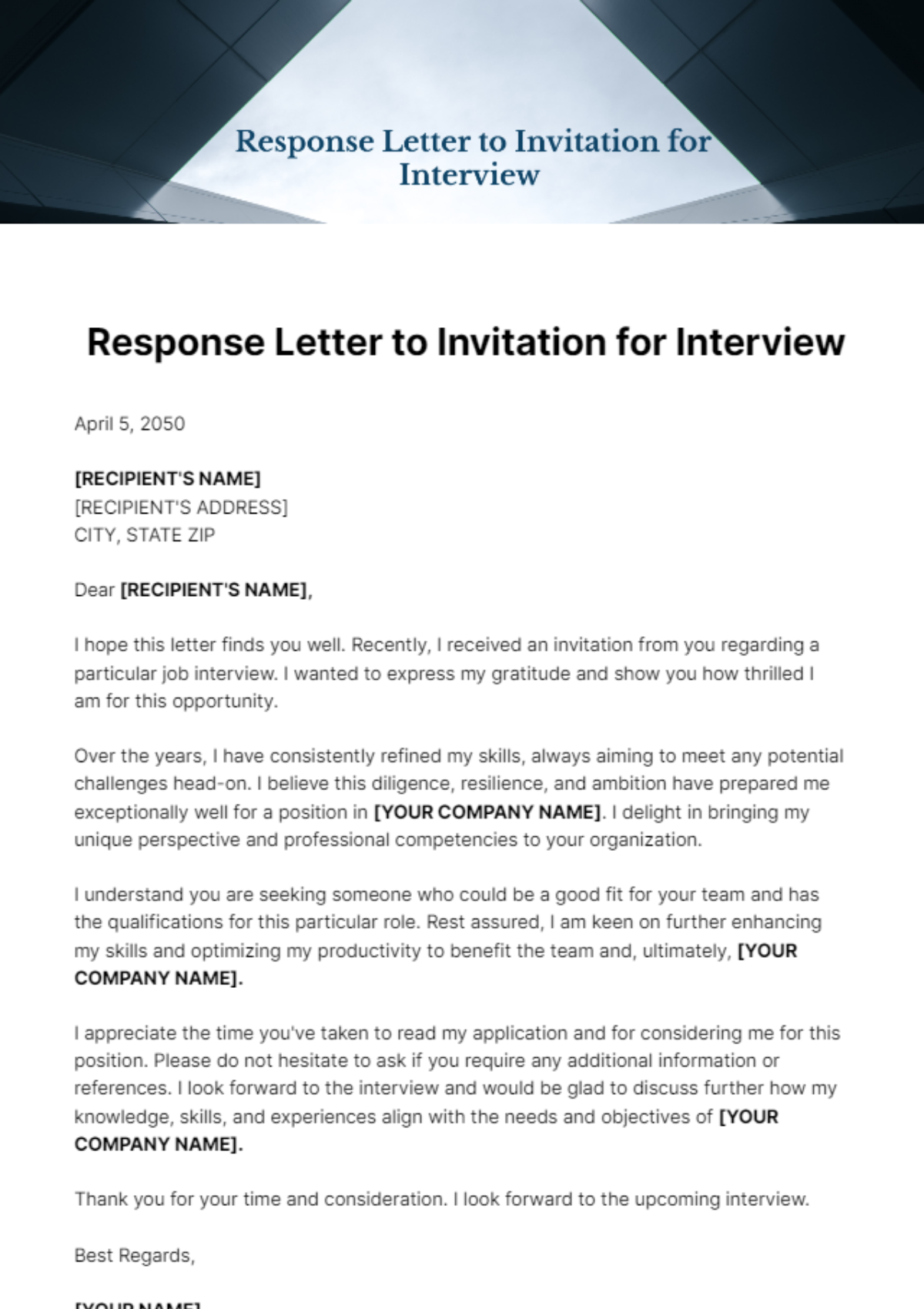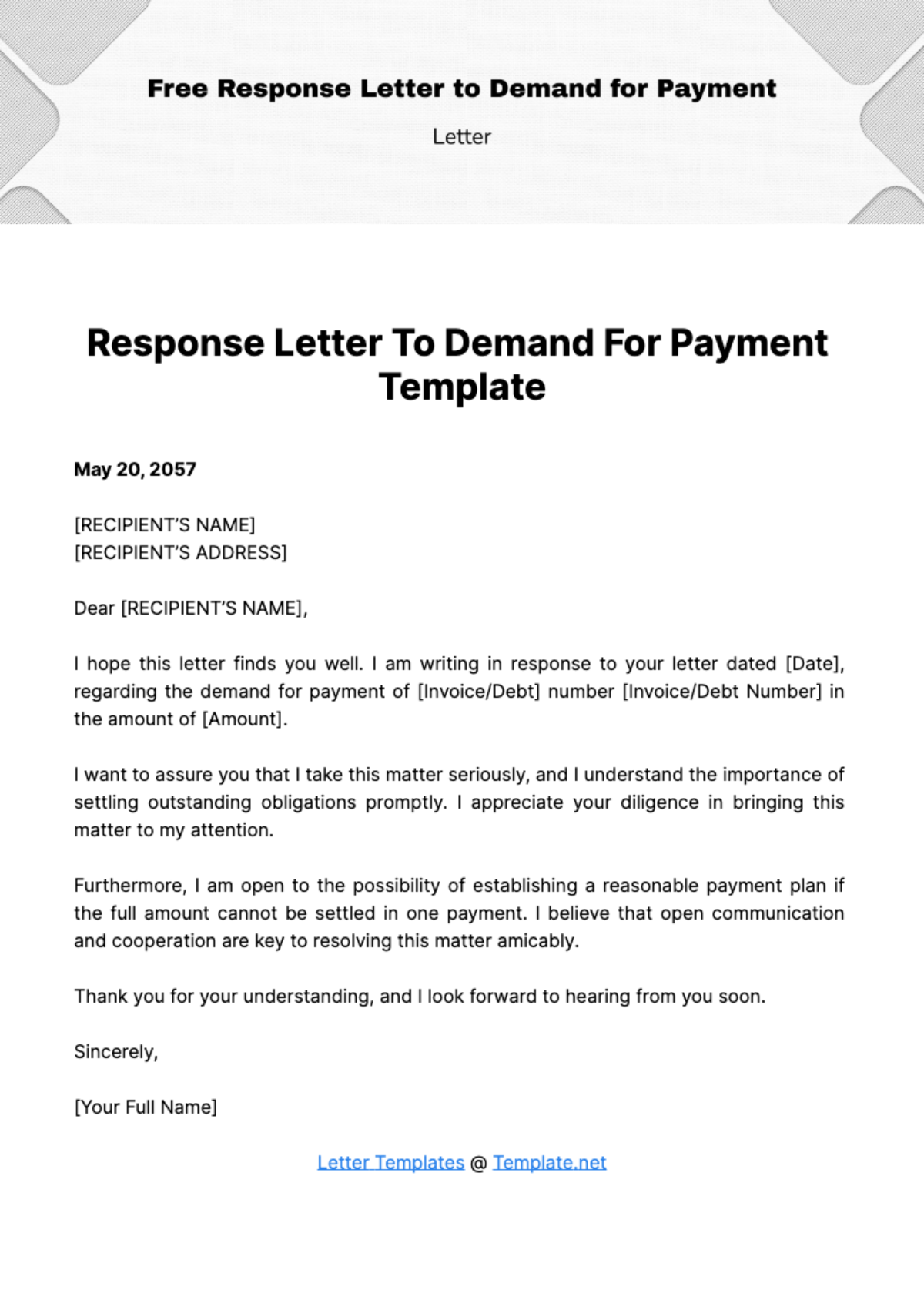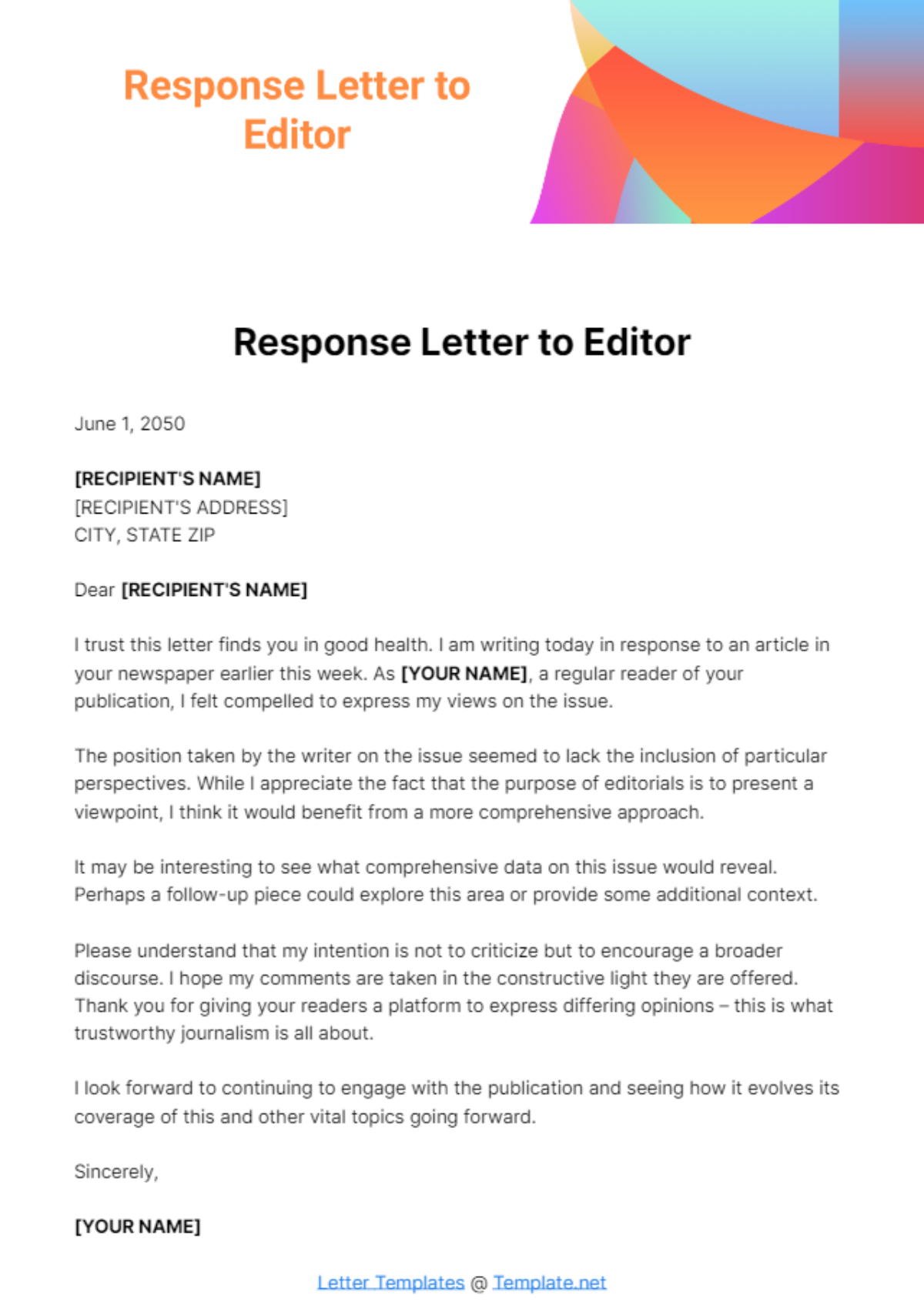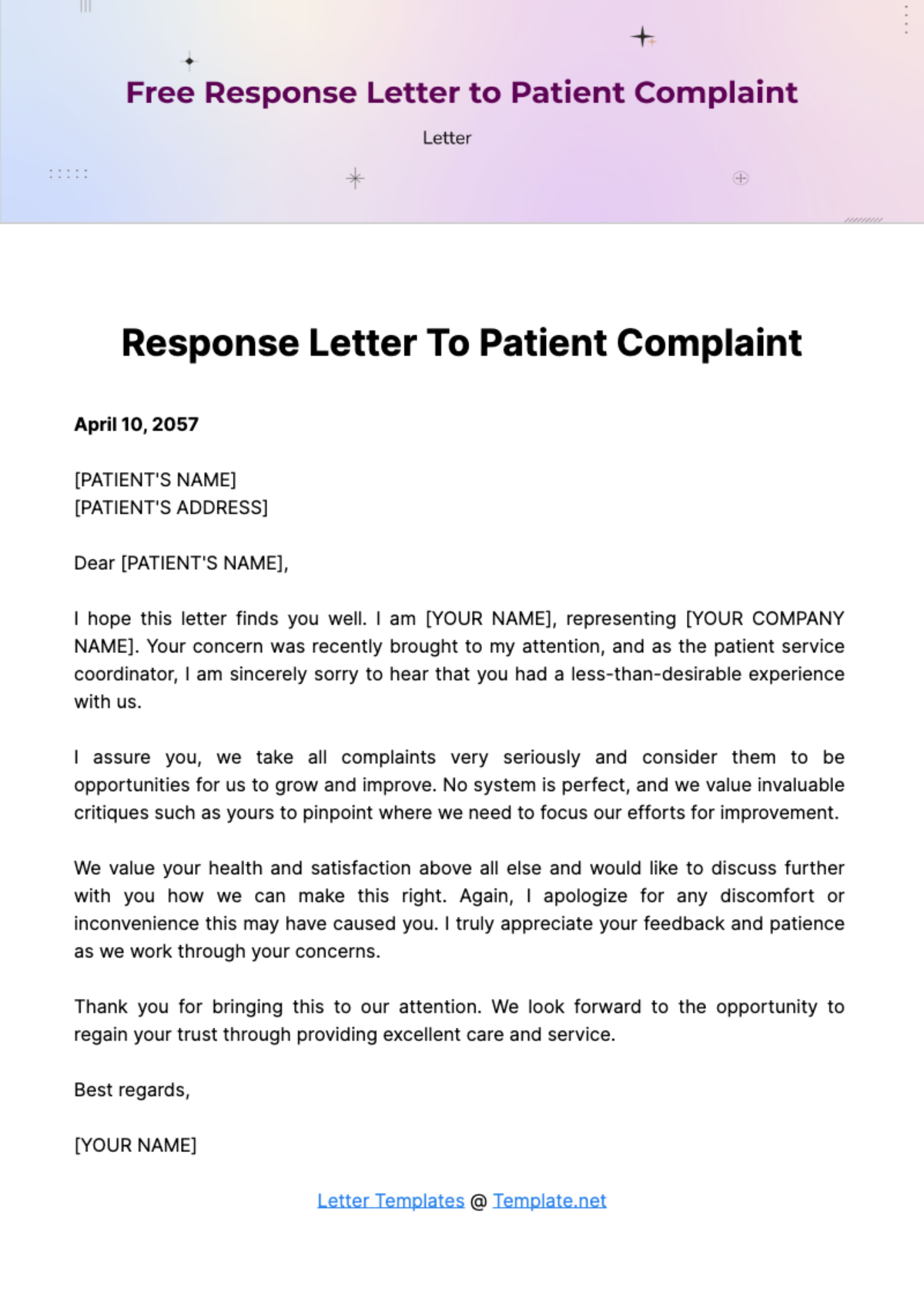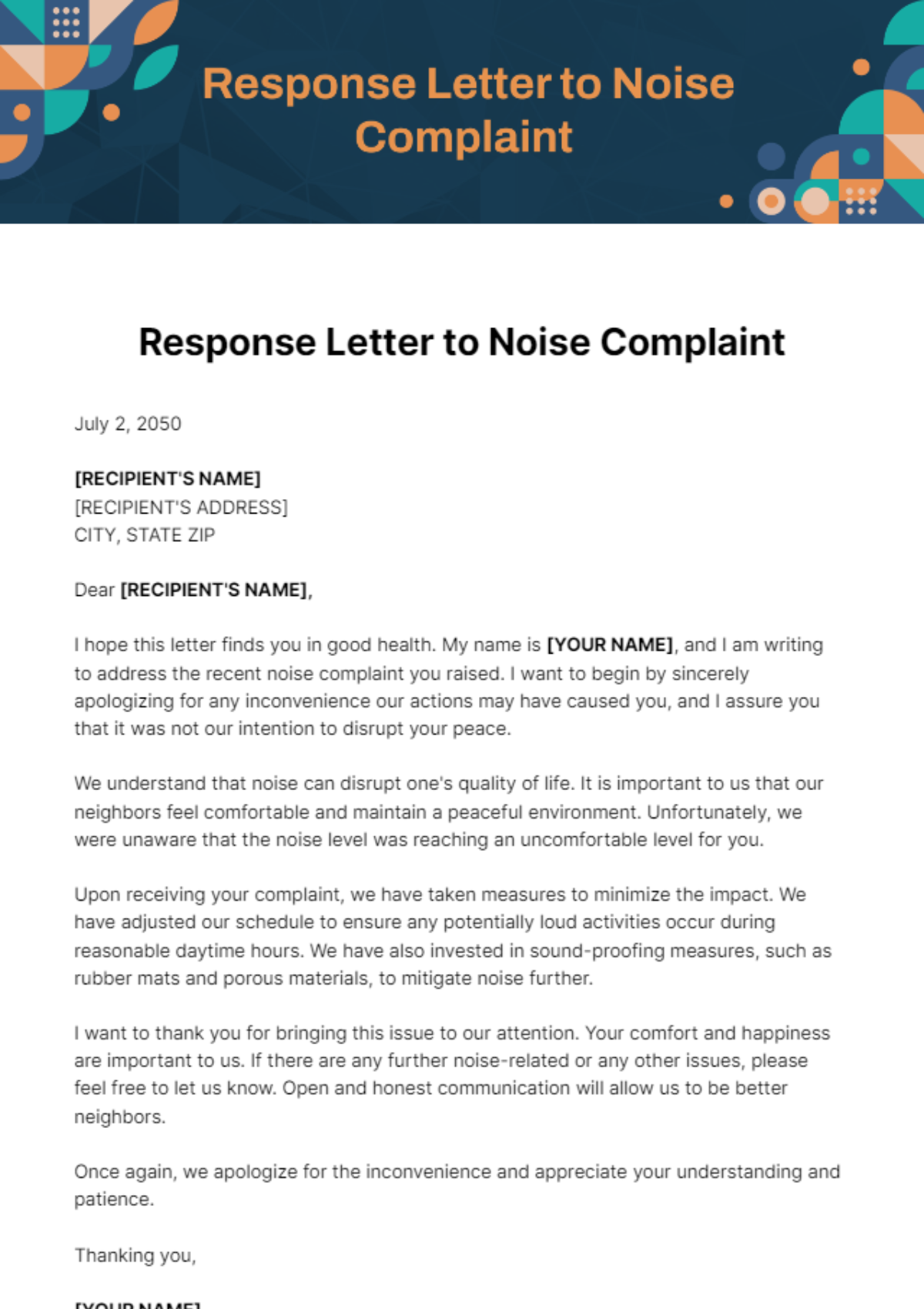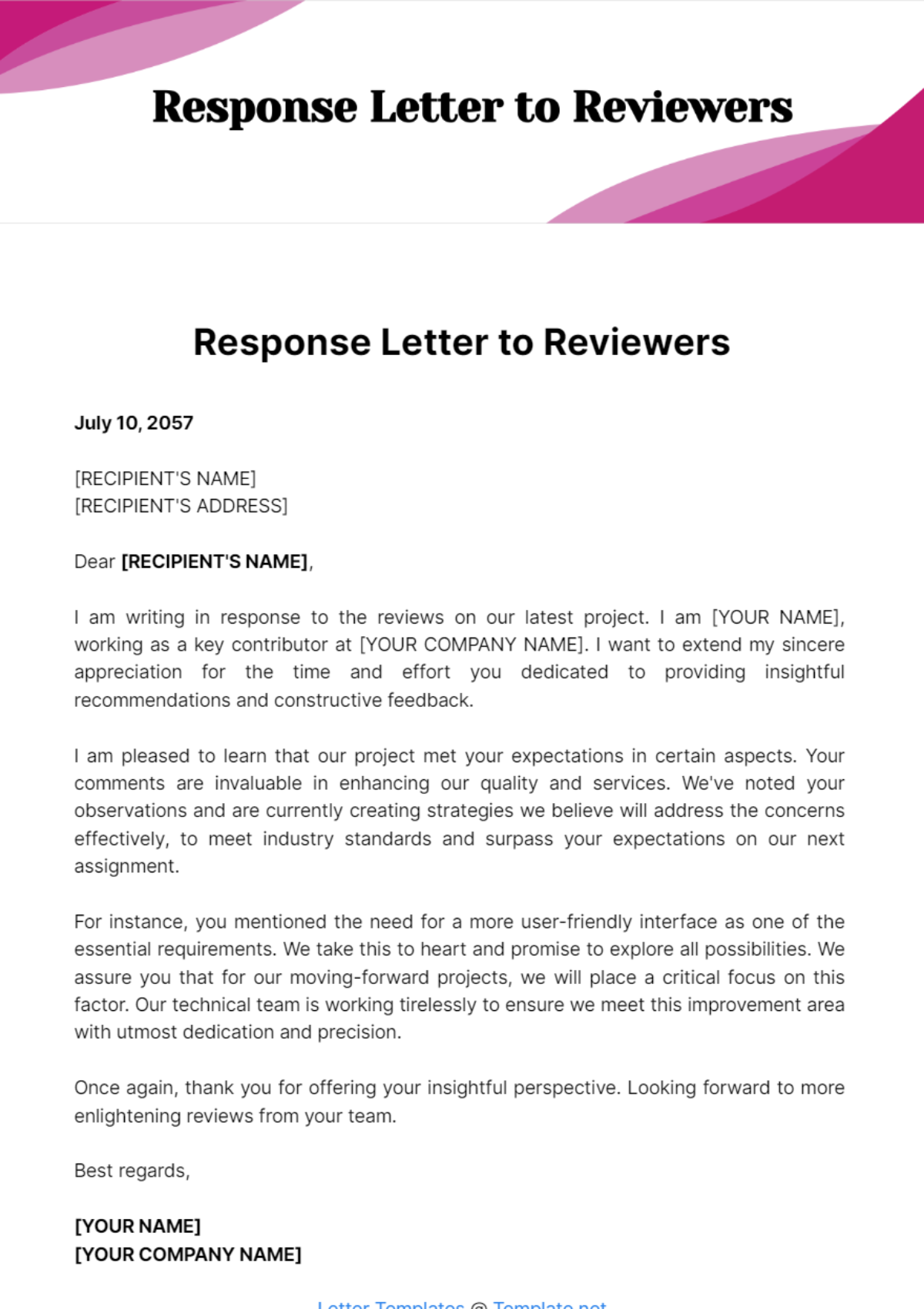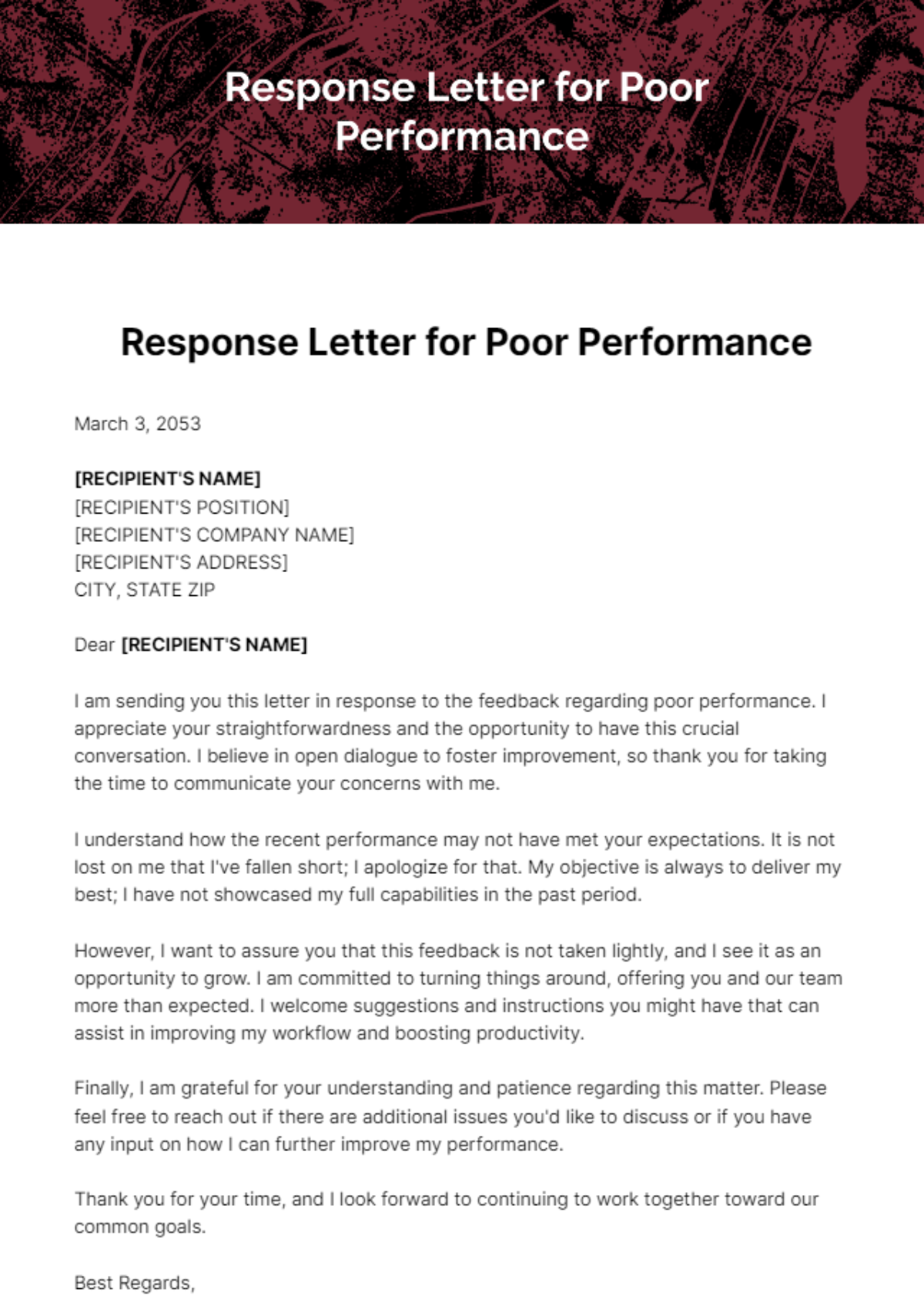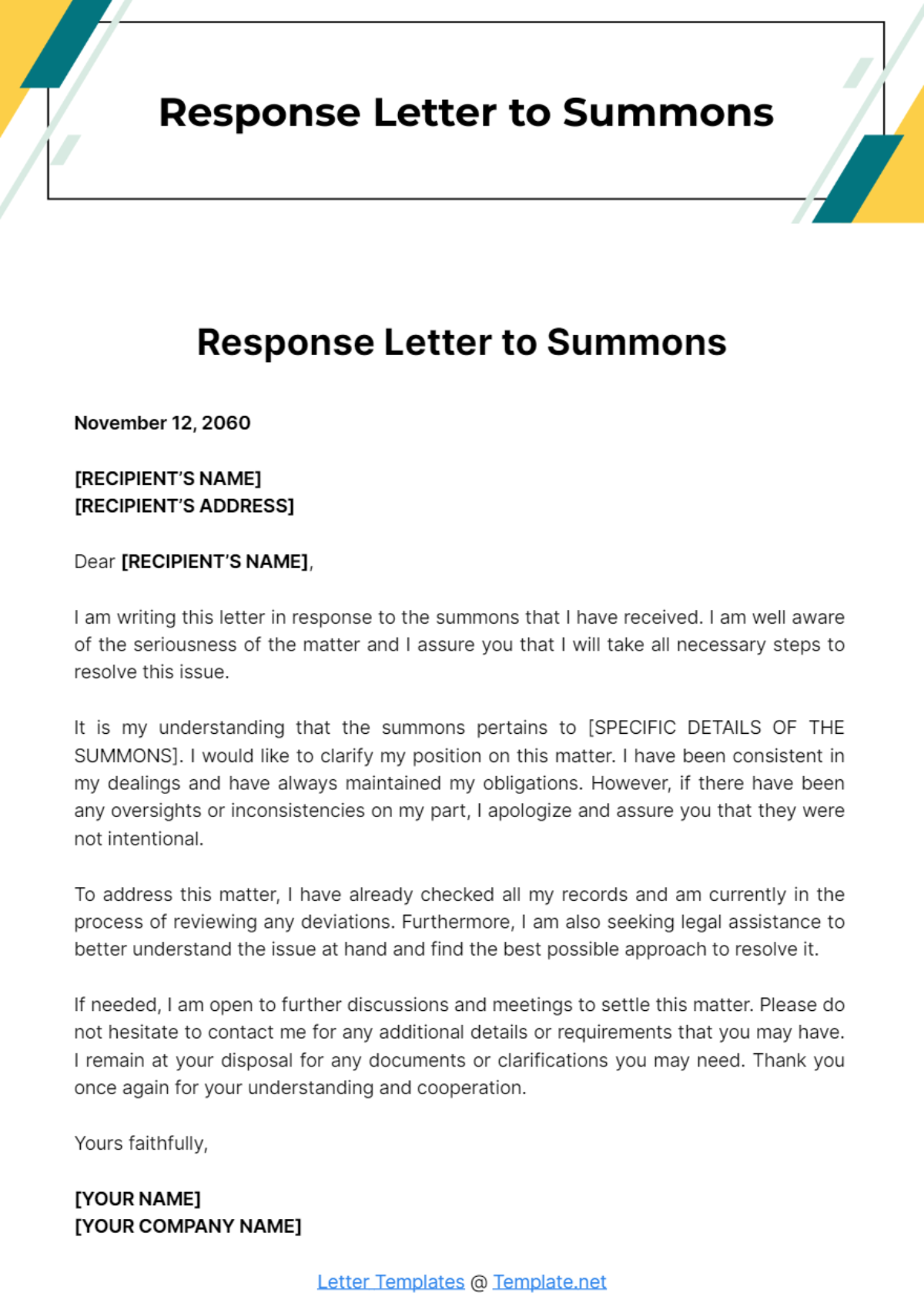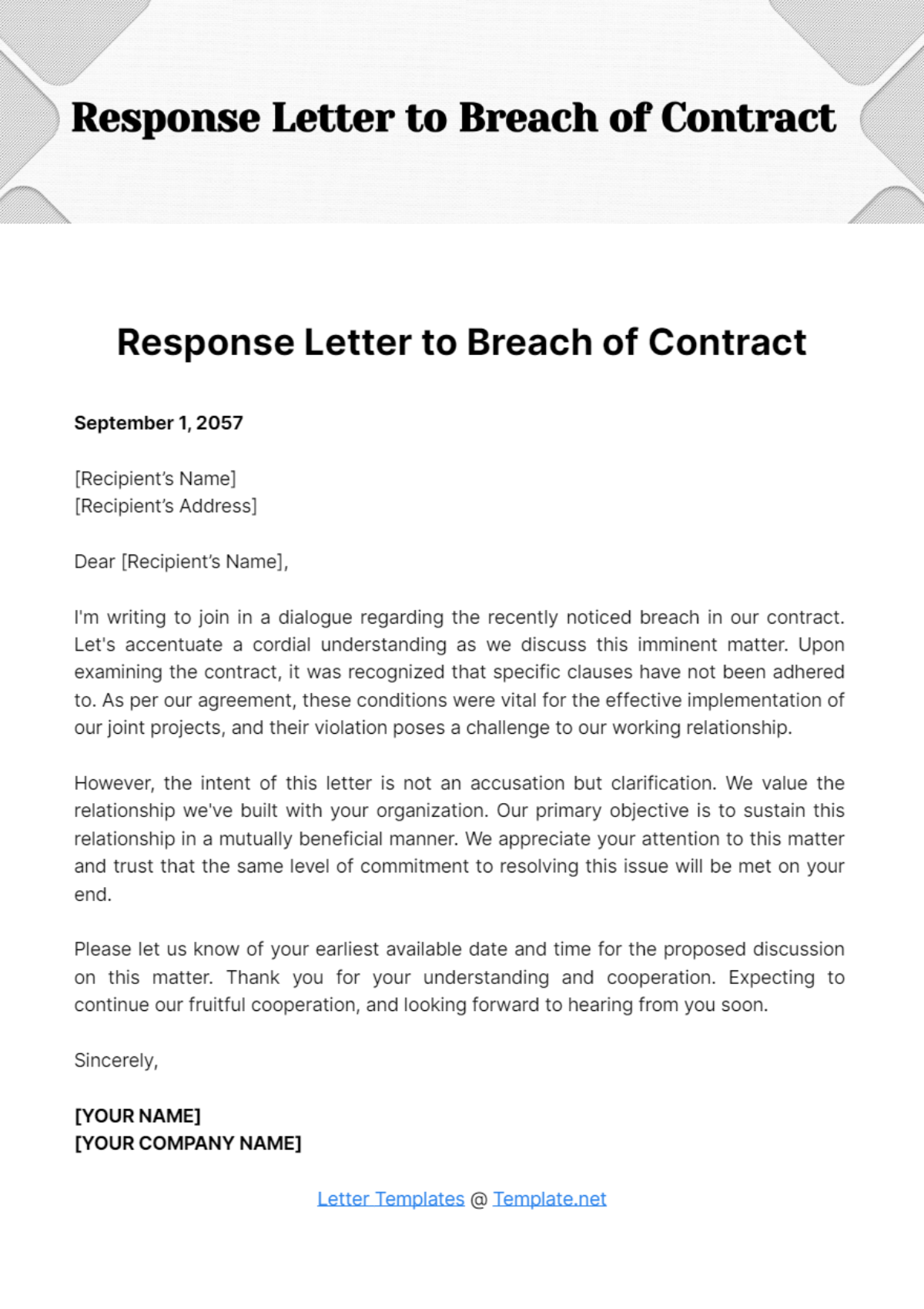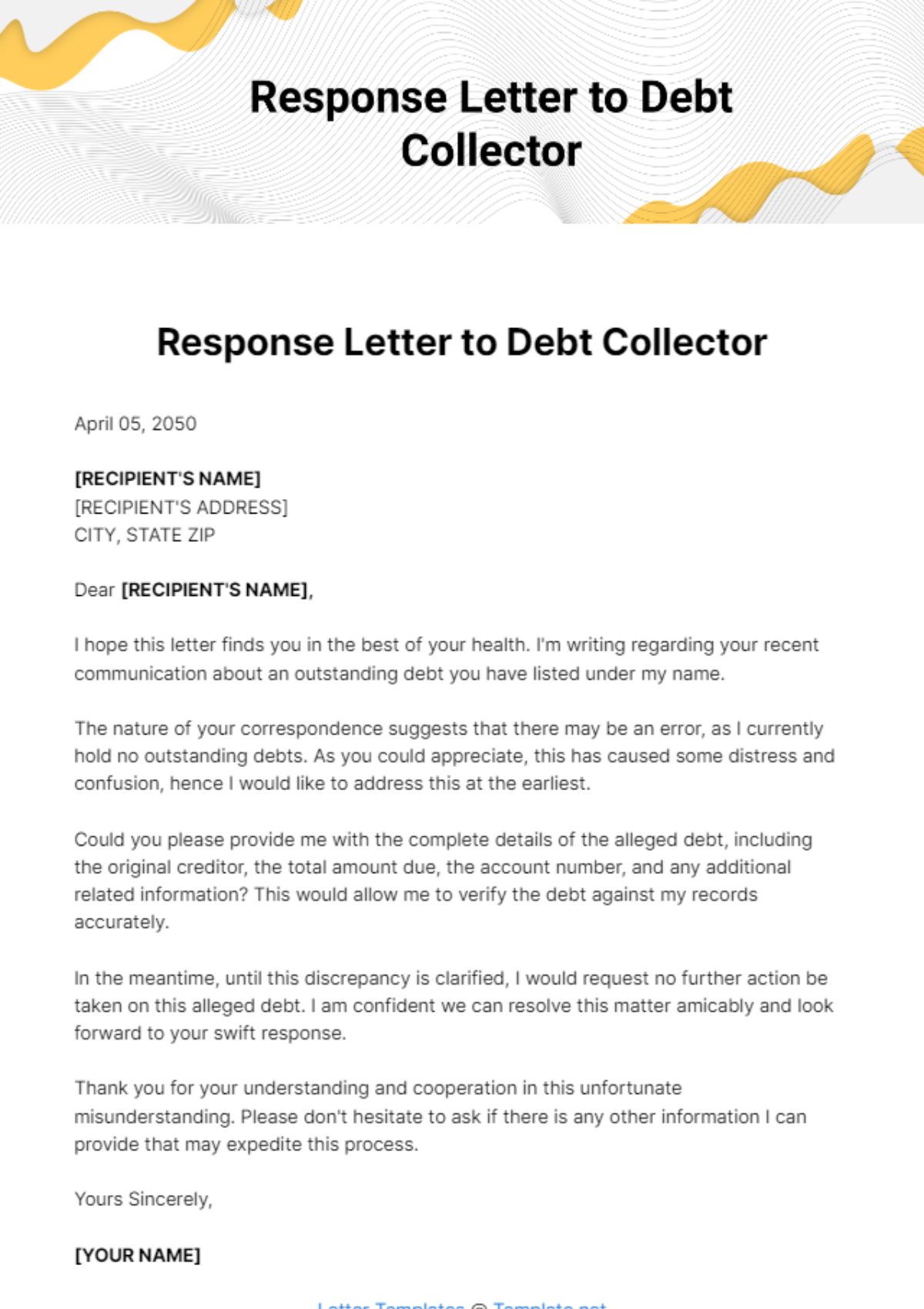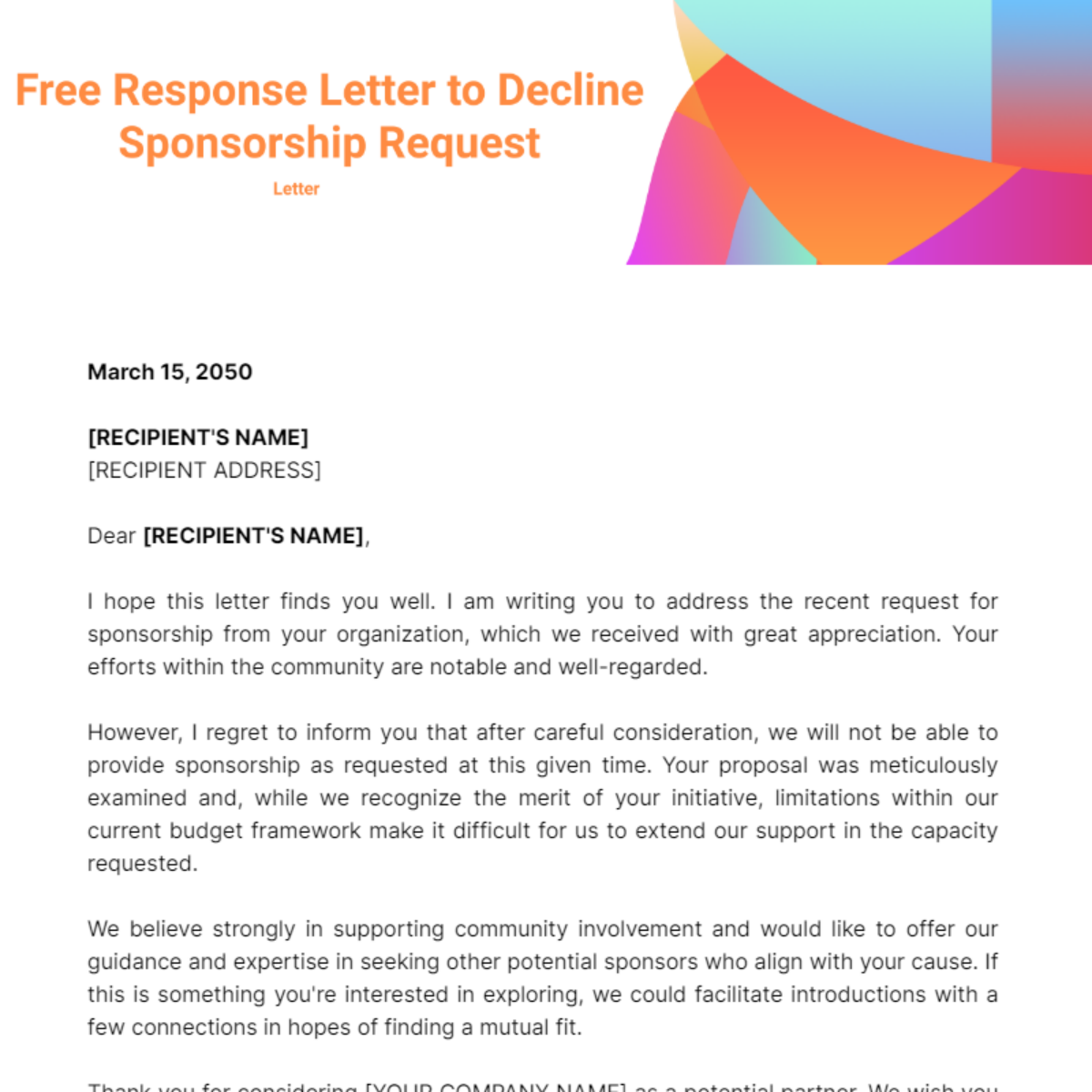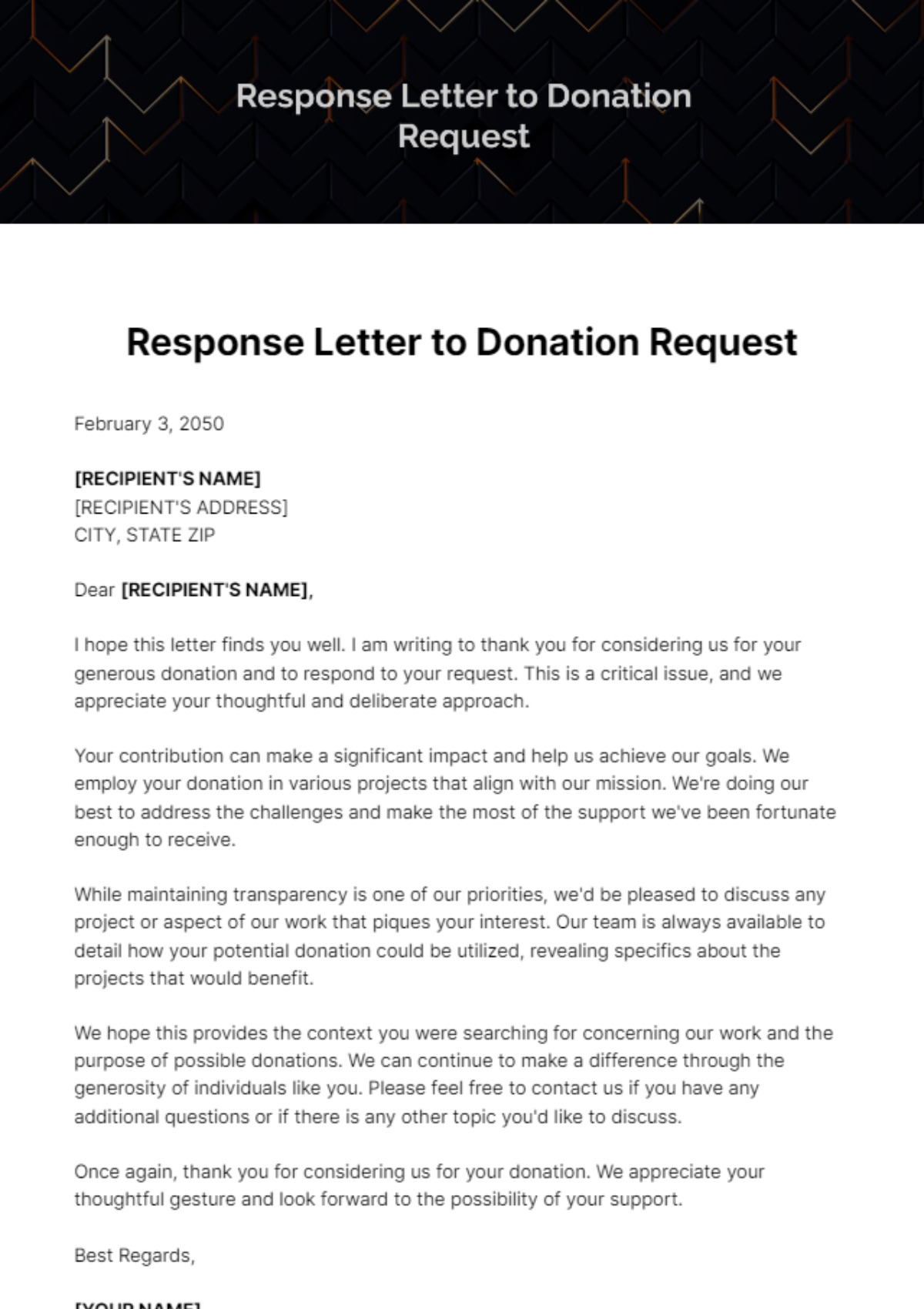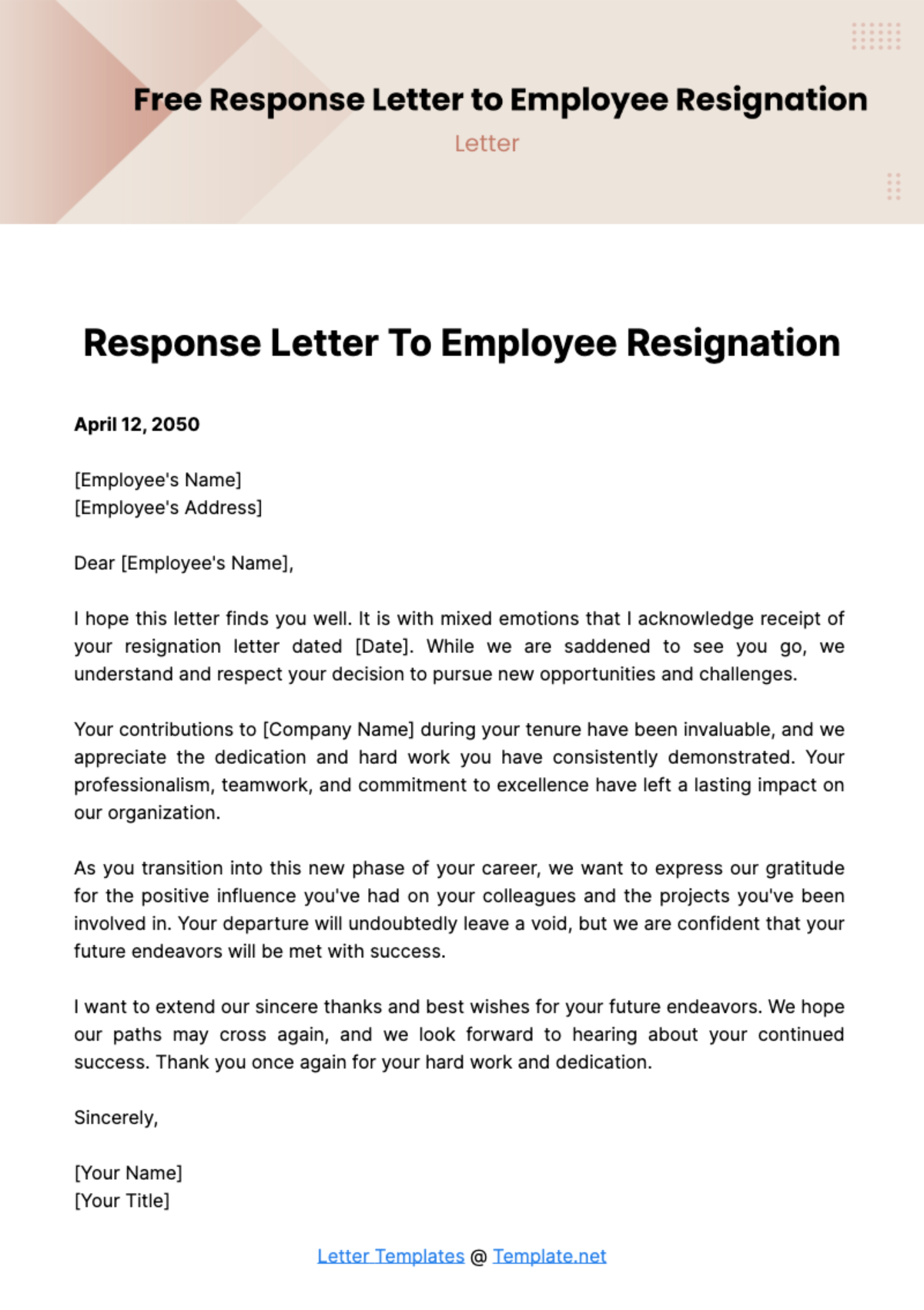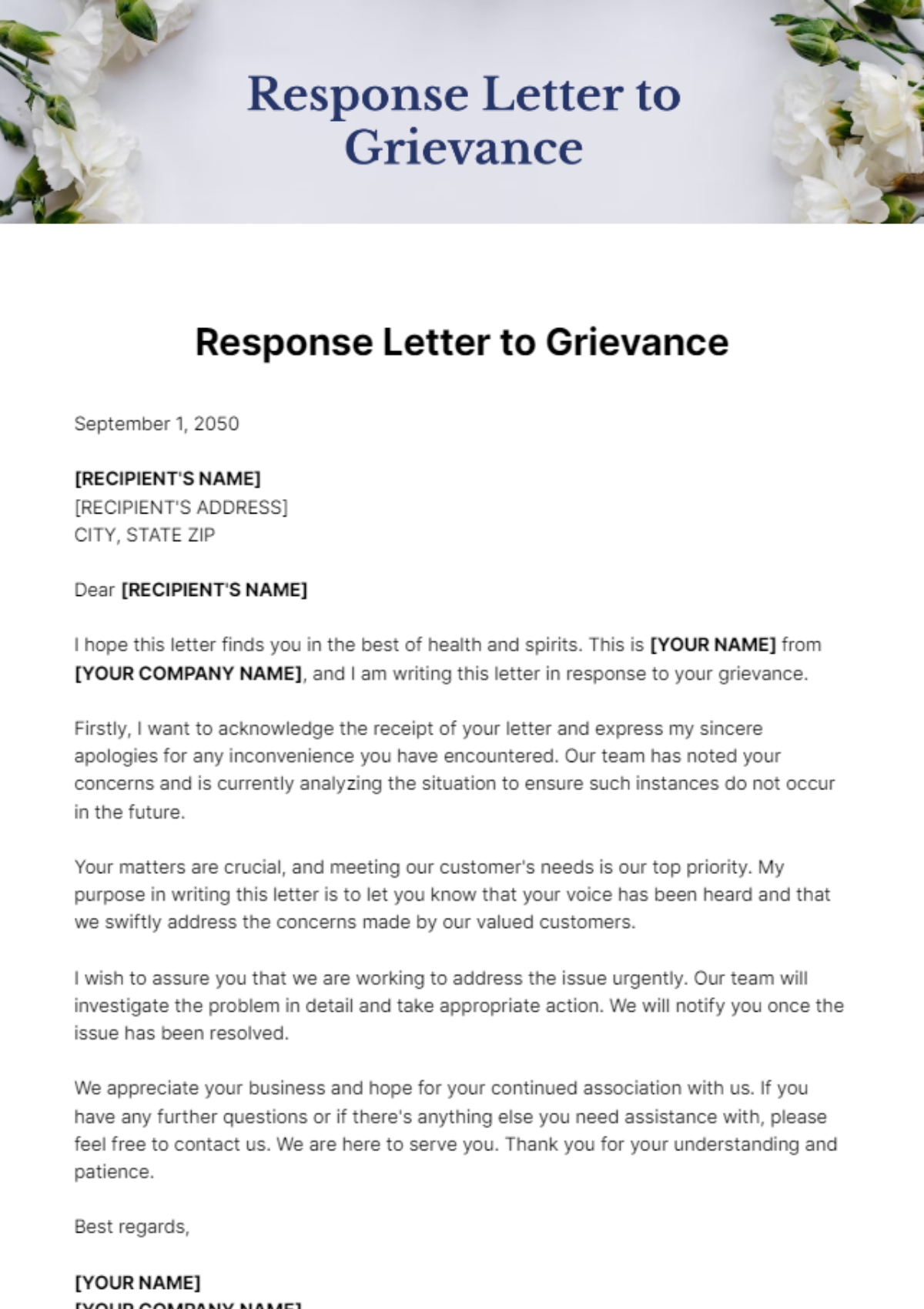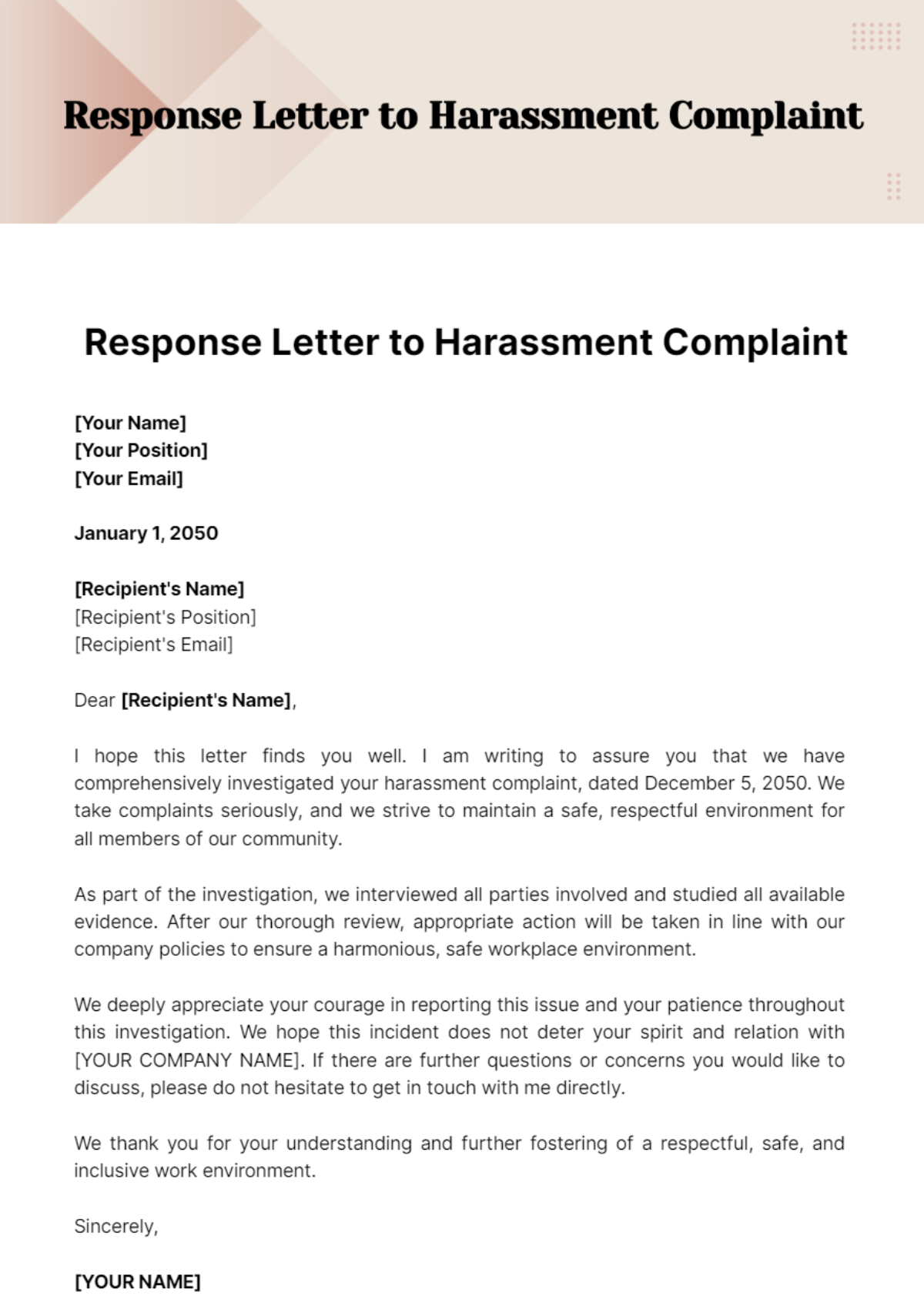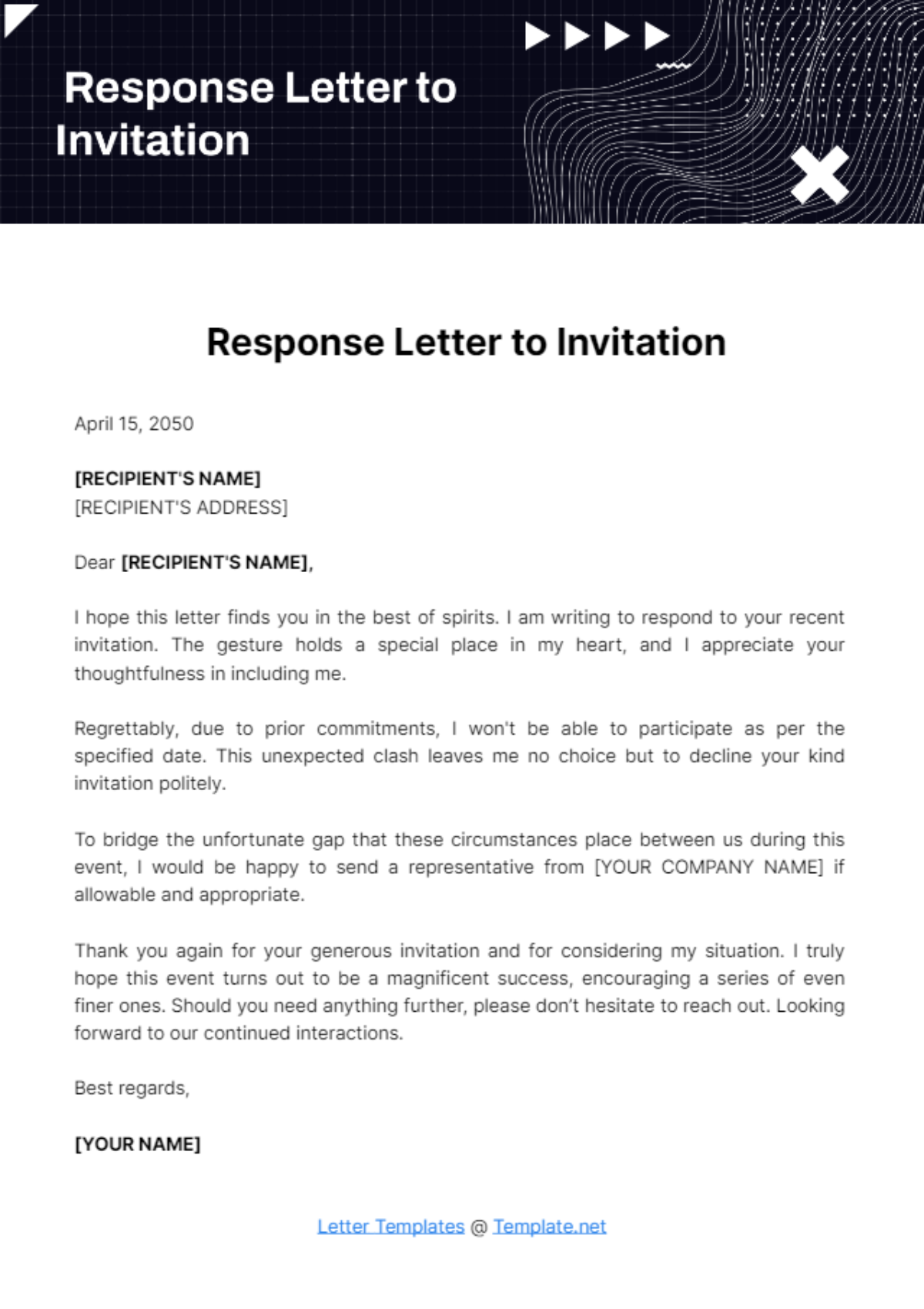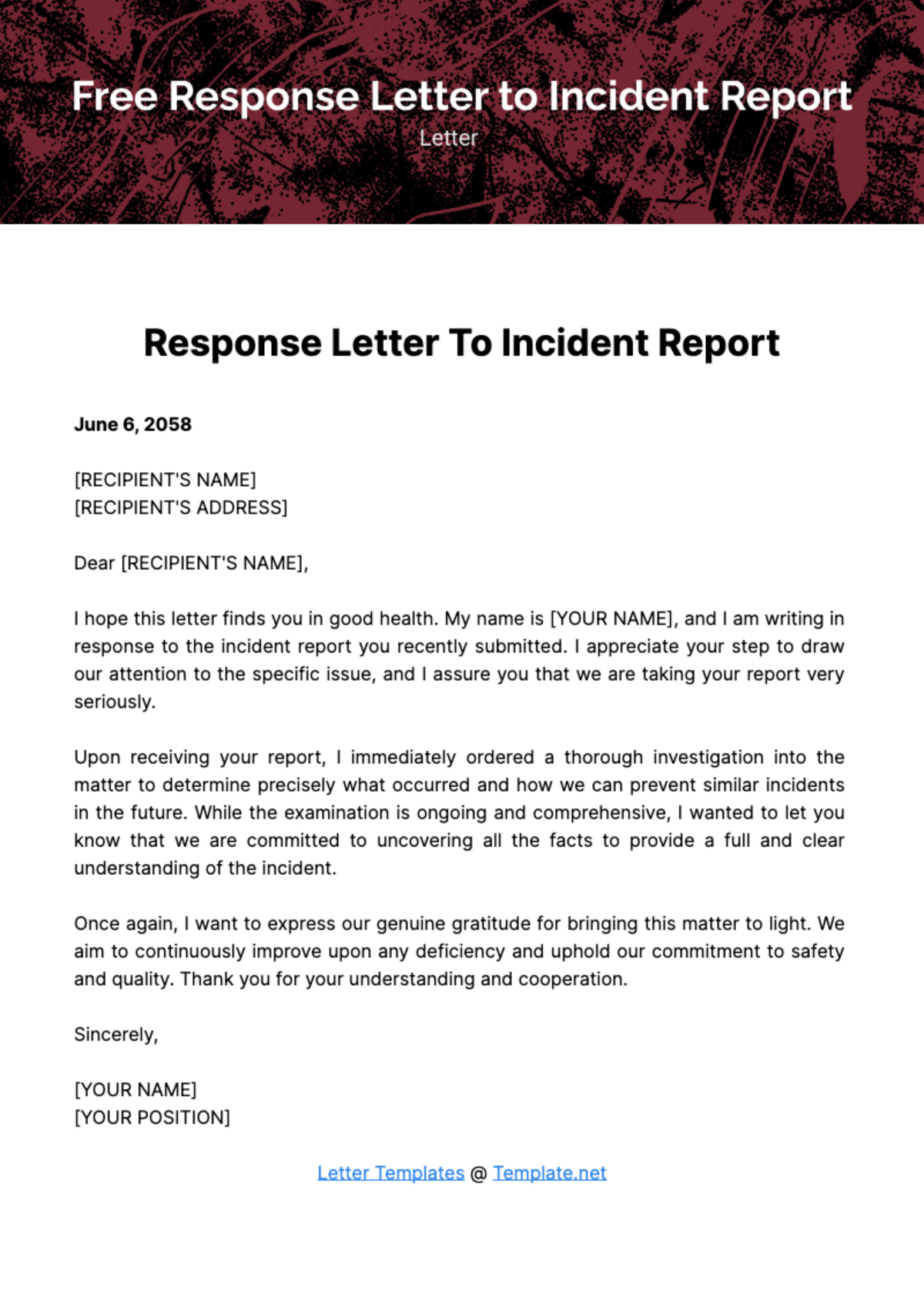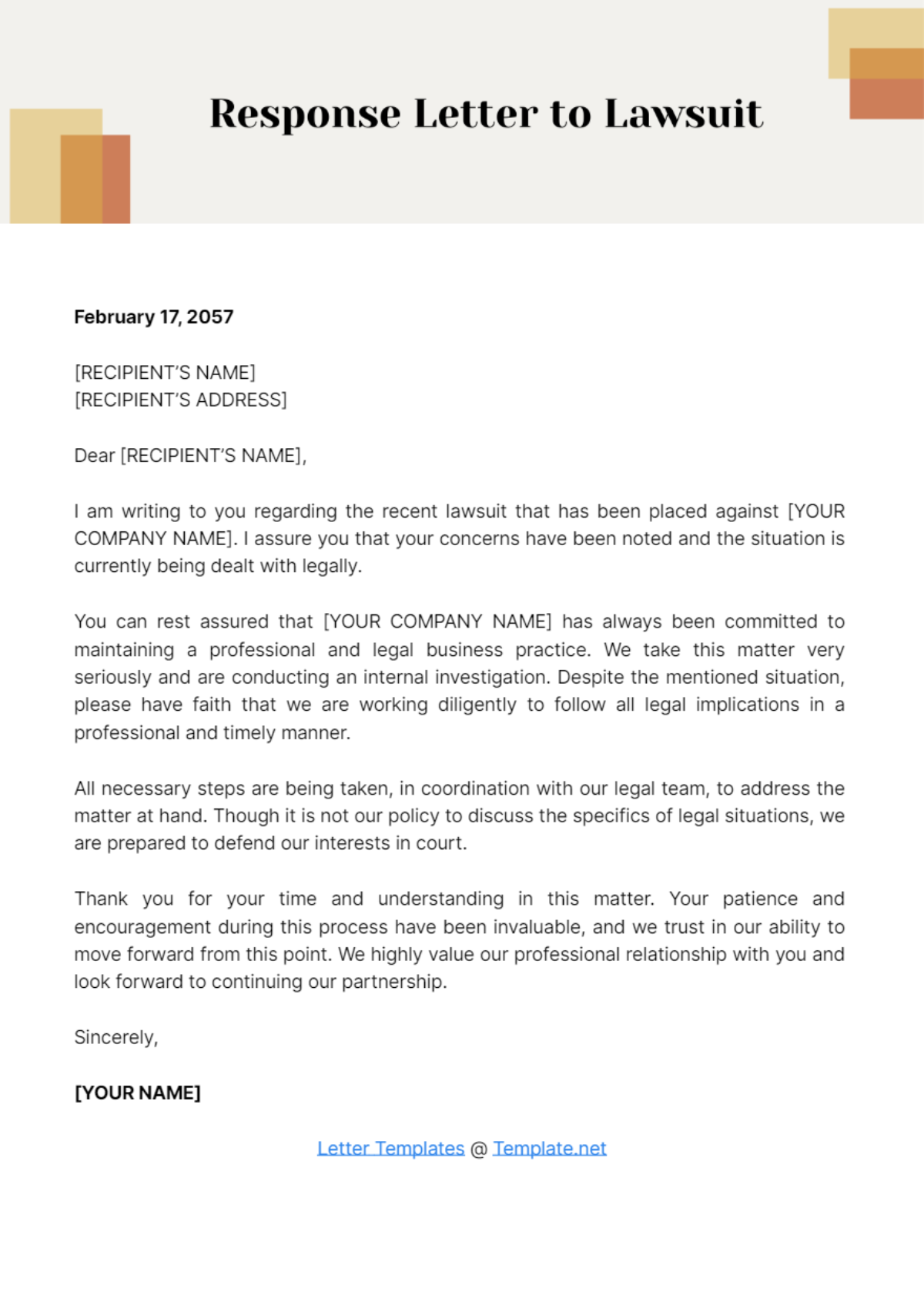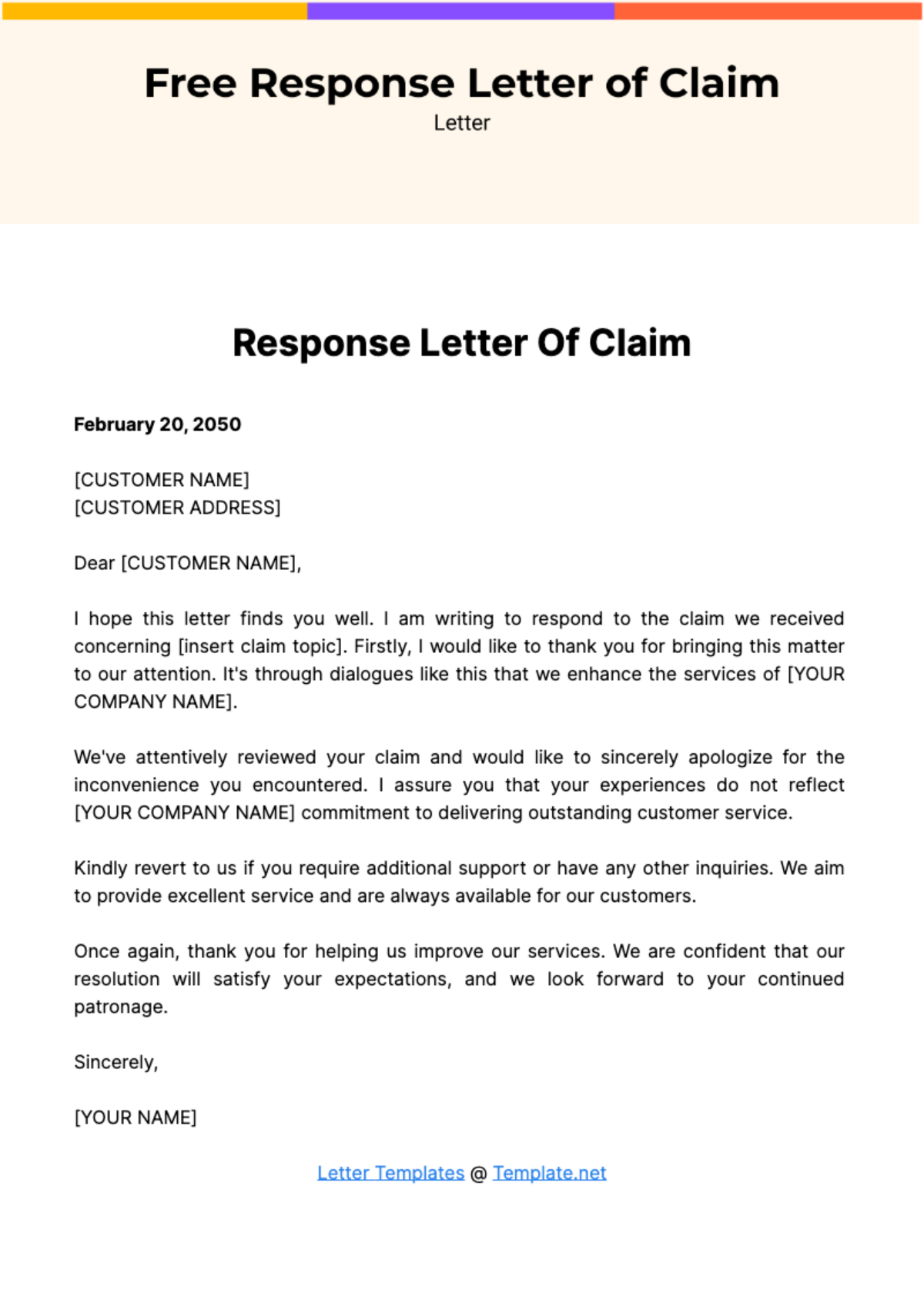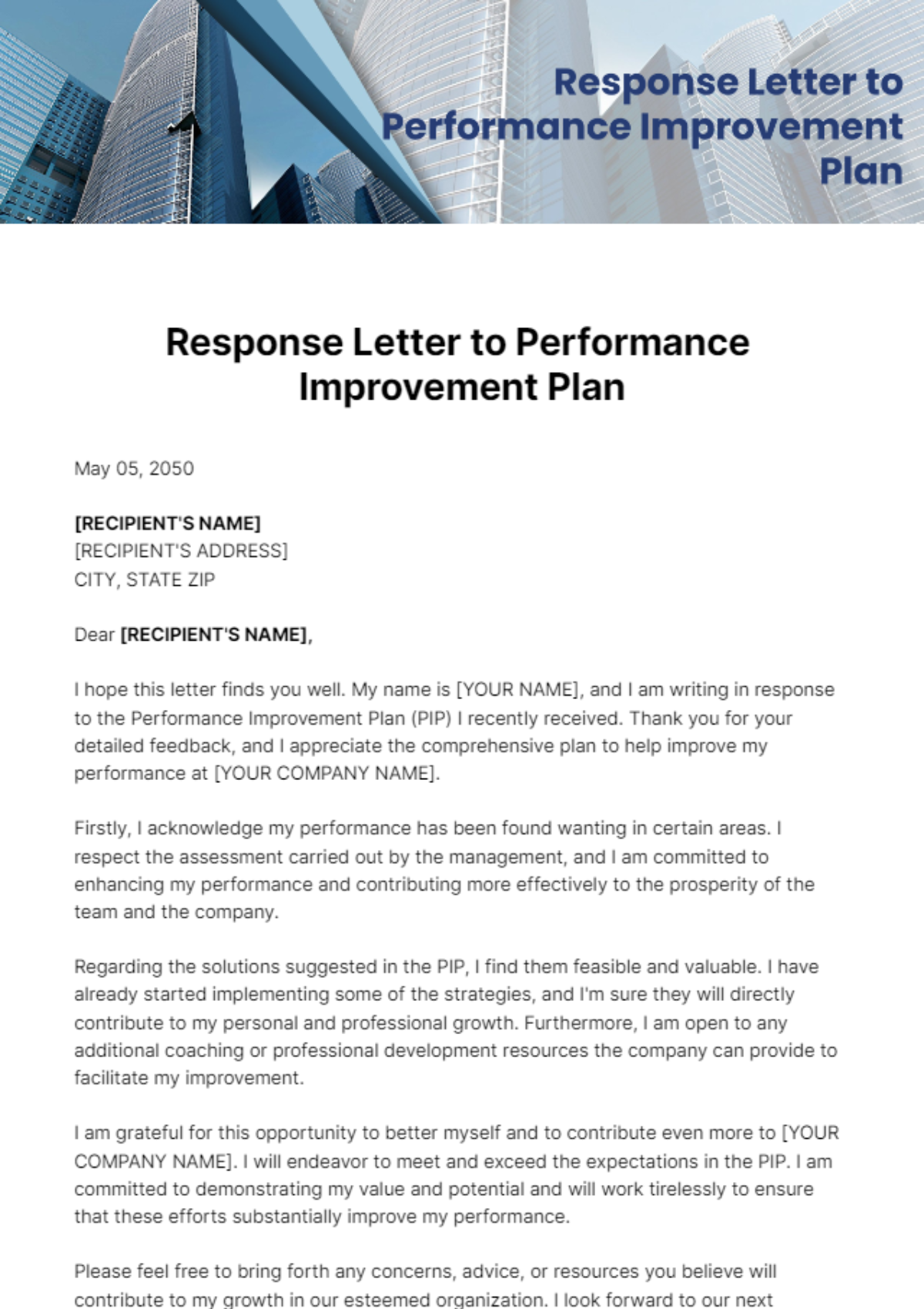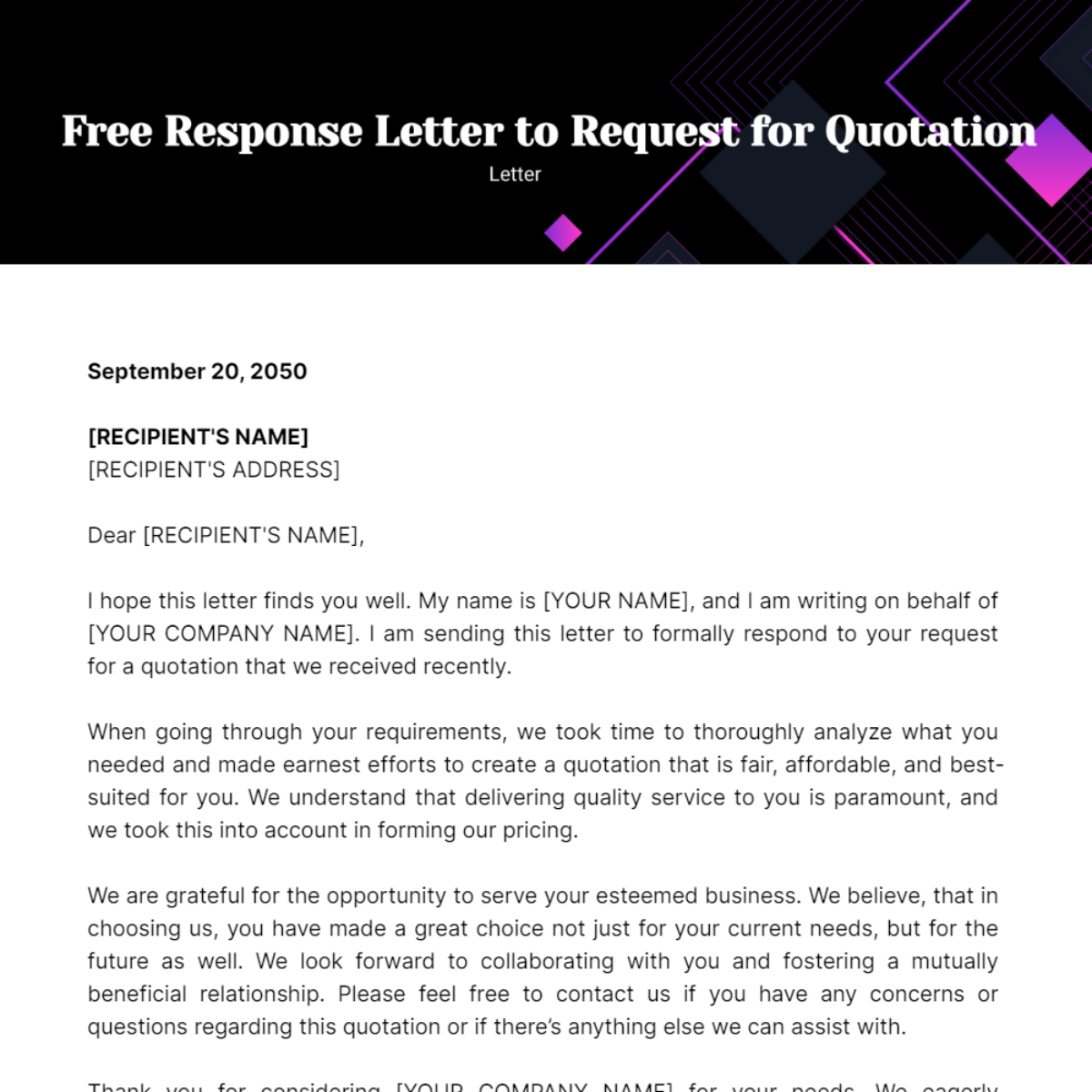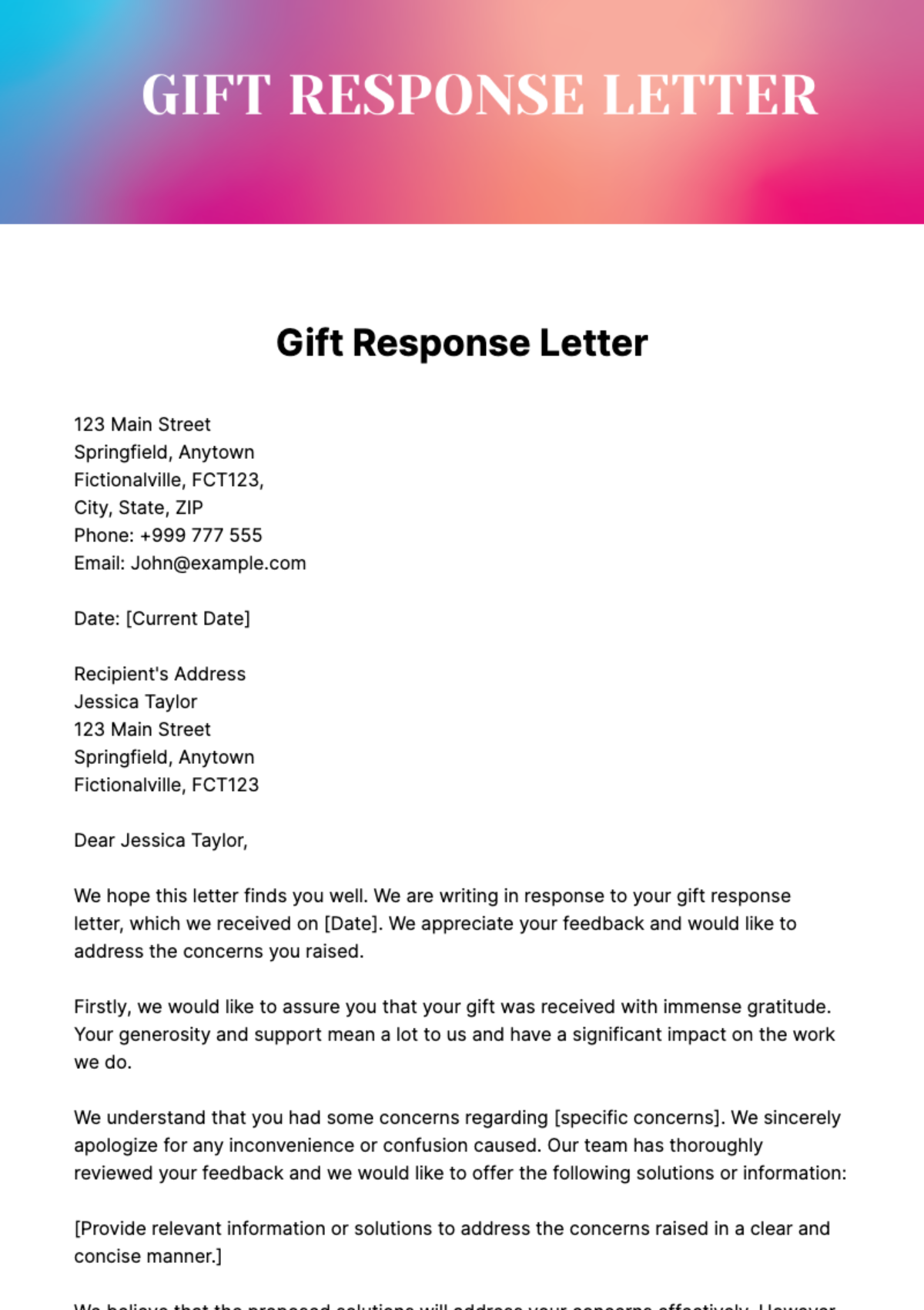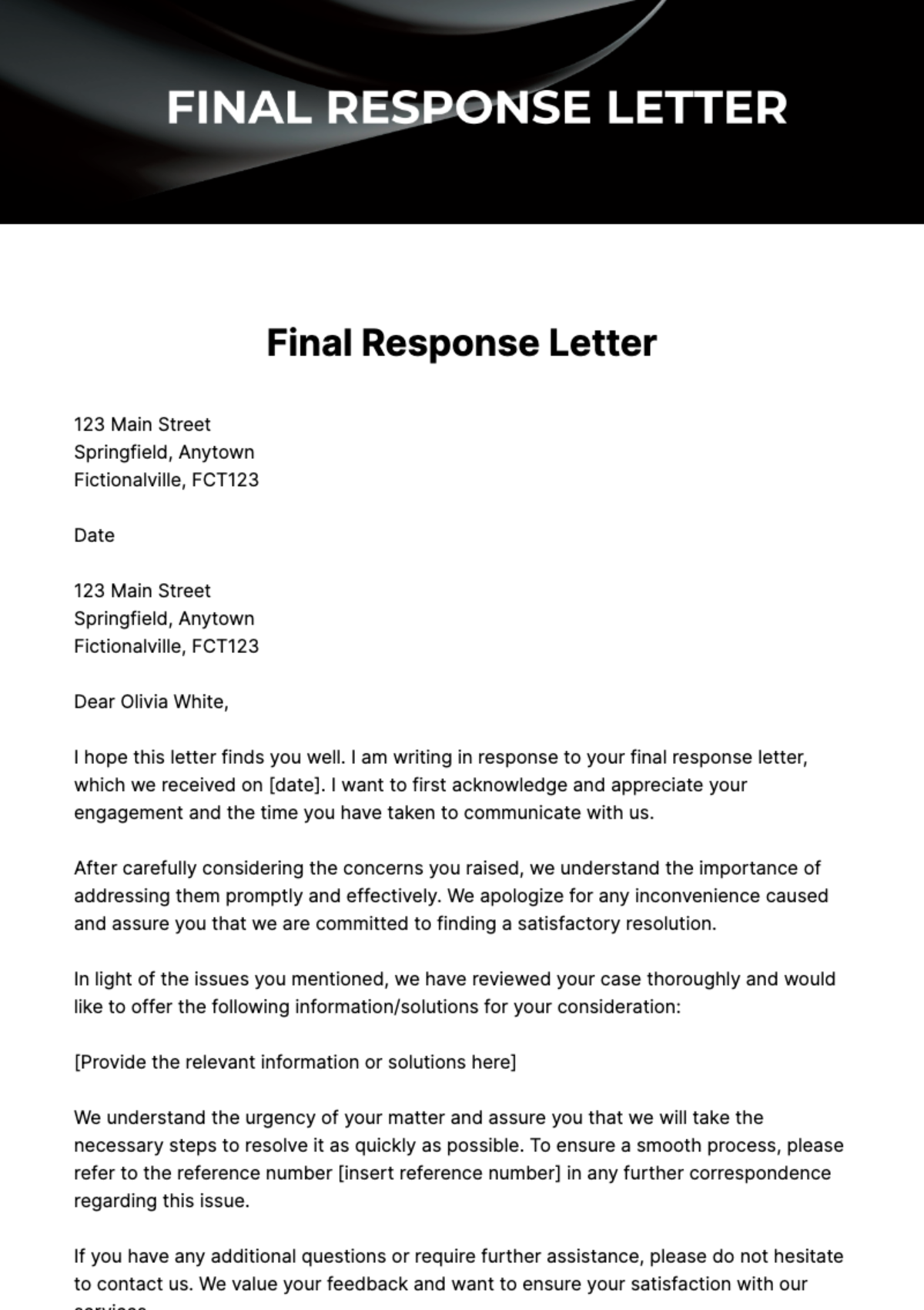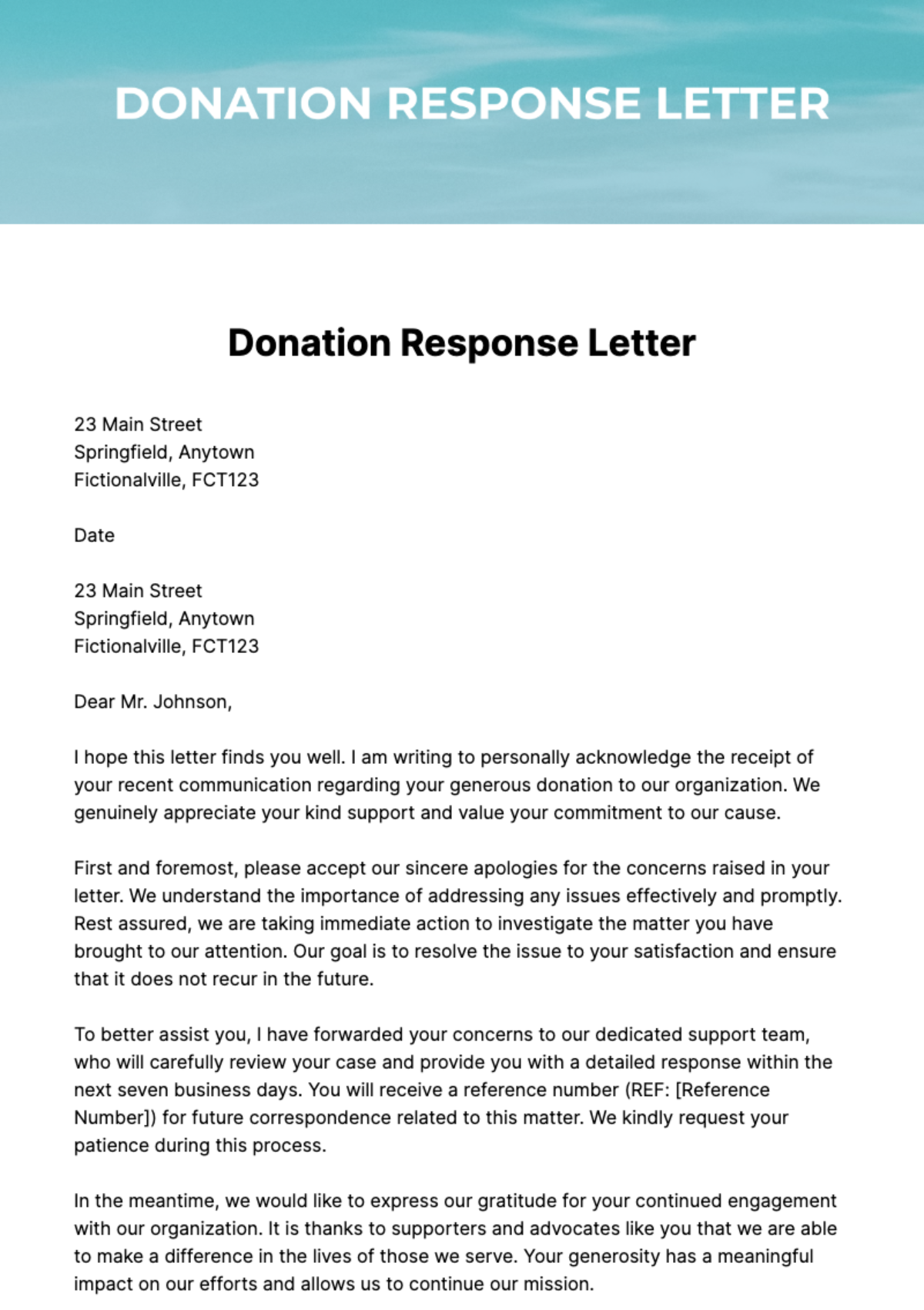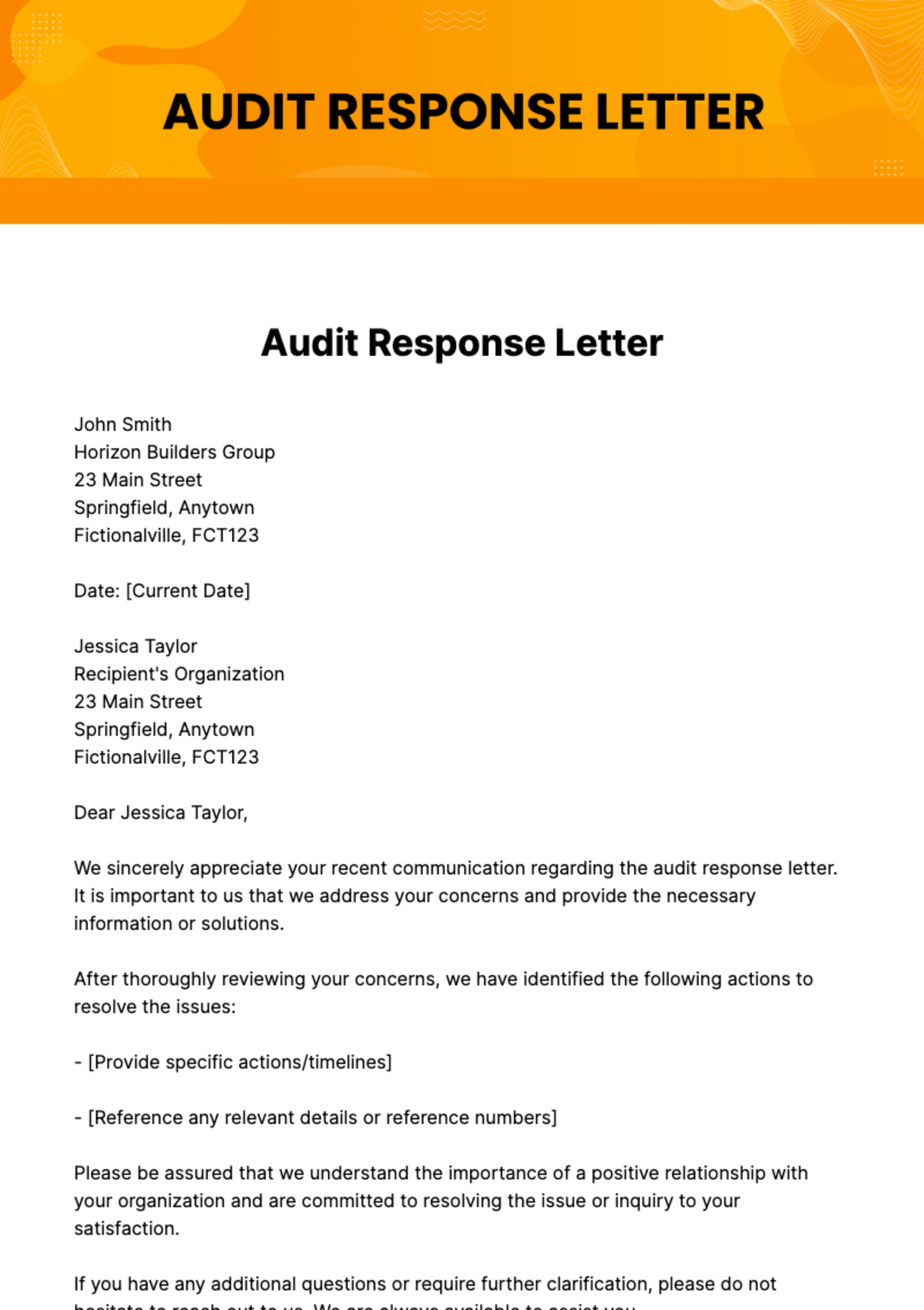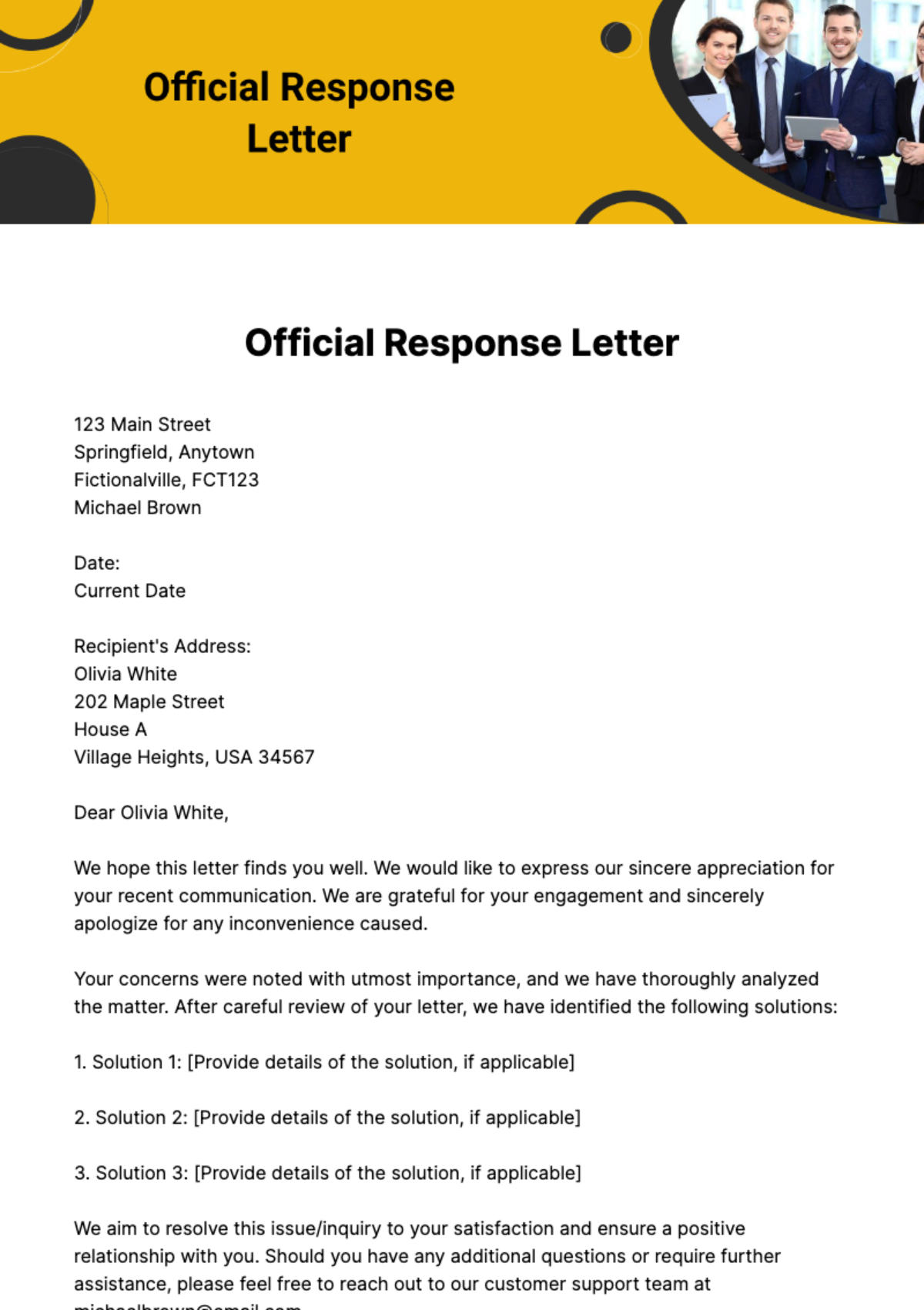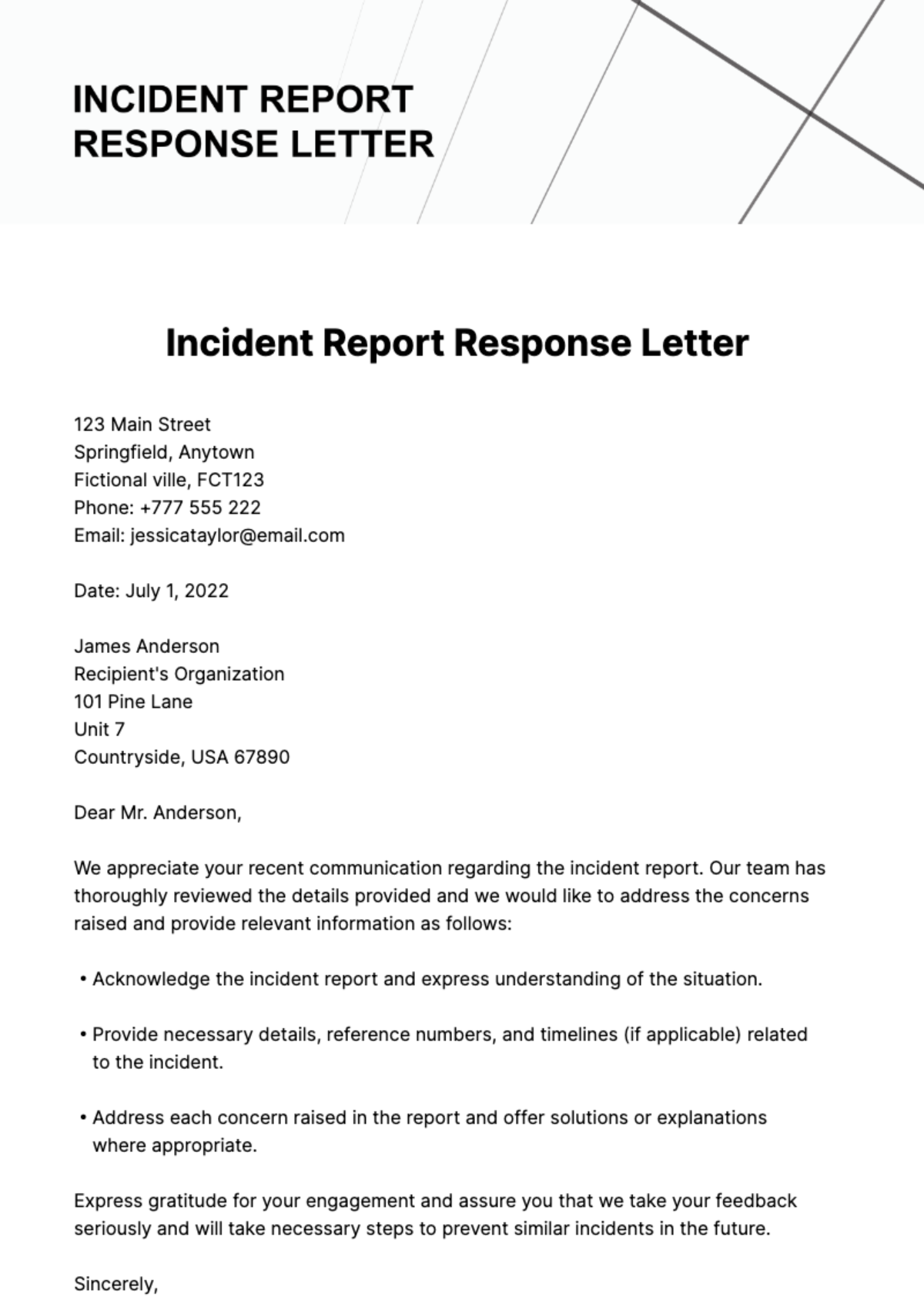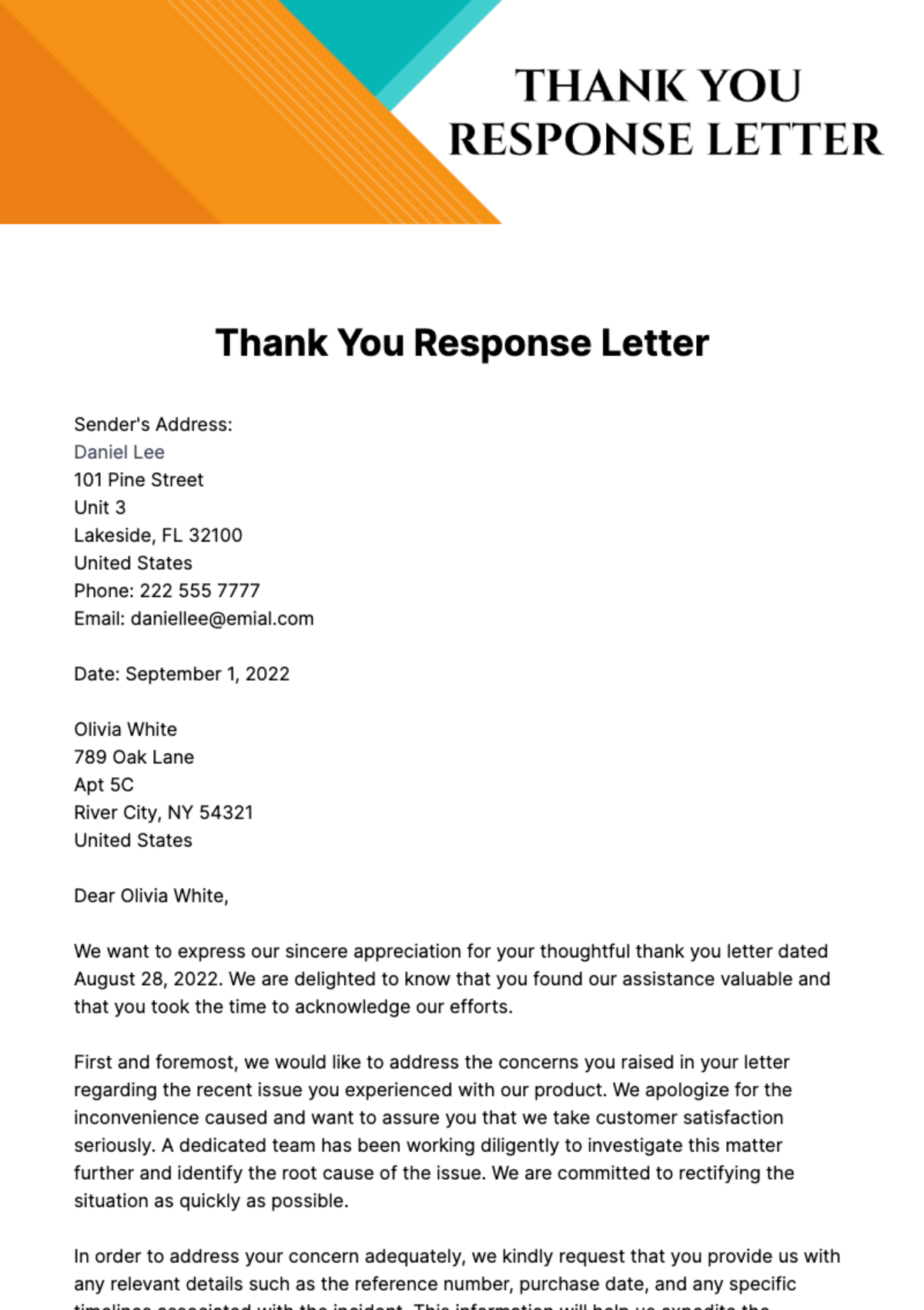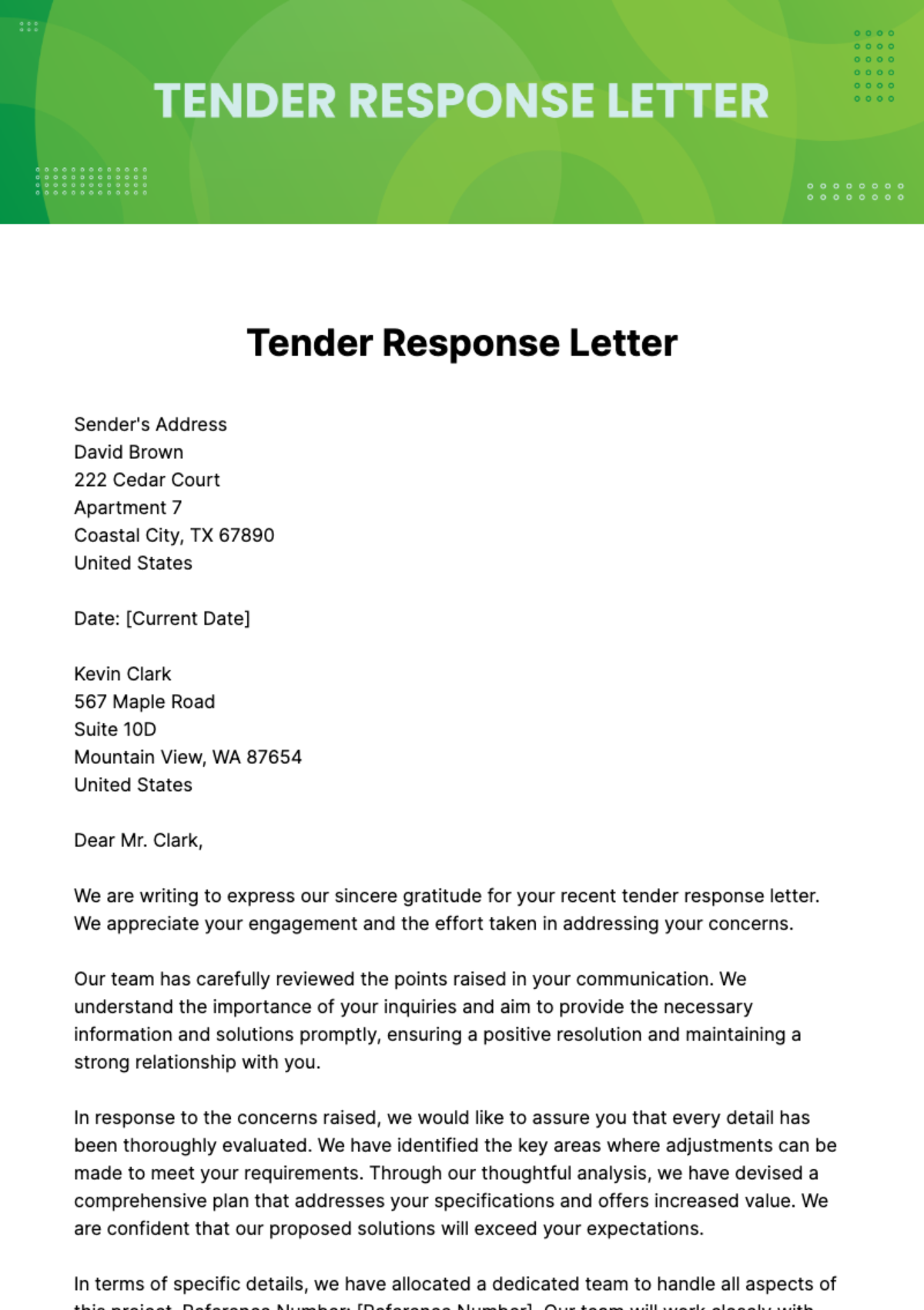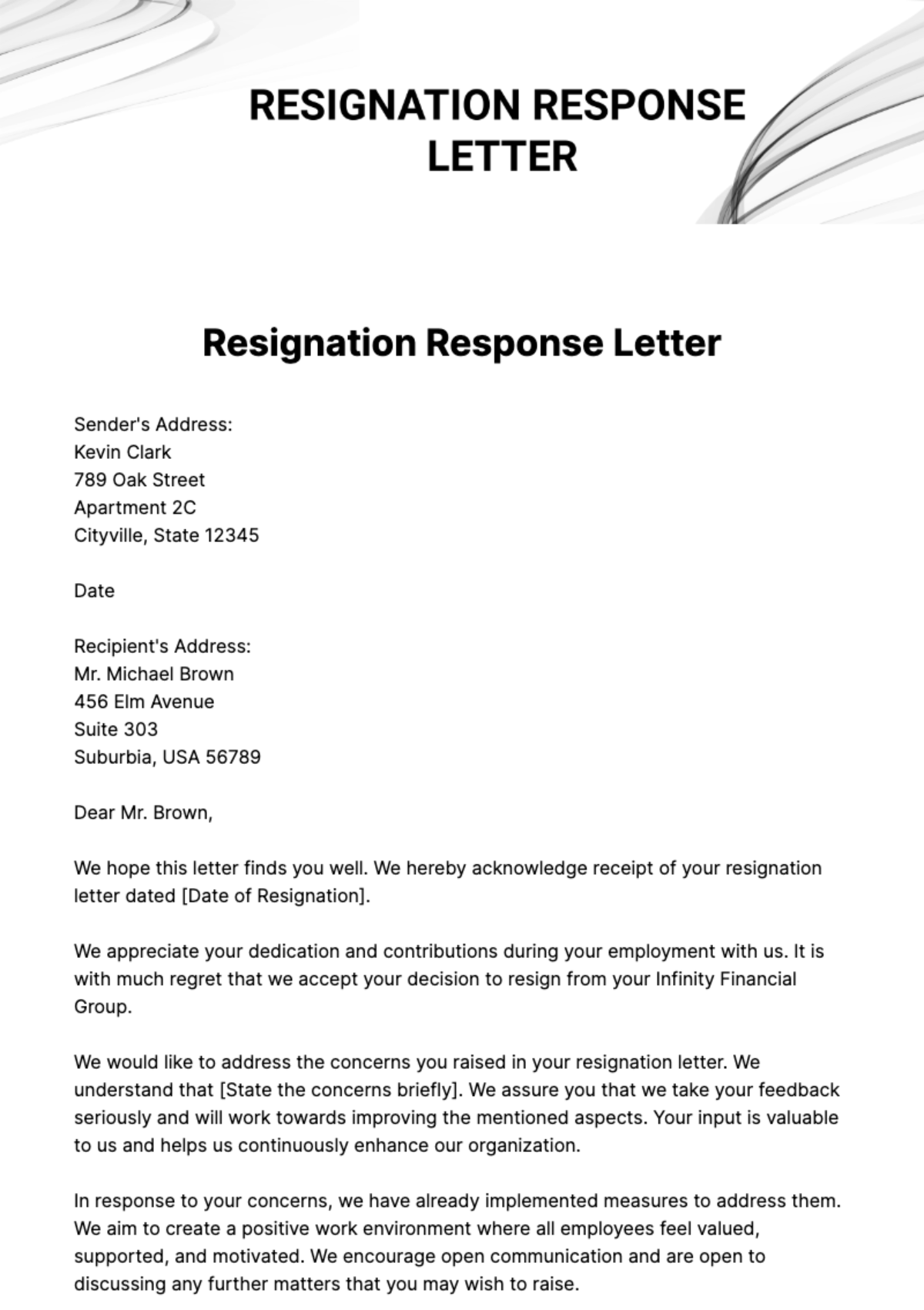Response letters are a special way of catering to your customer's queries. In that way, you can win their trust quickly. Present your letter of response to your potential customers using our 100% customizable, easily editable, and printable Response Letter Templates. These expertly designed and professionally written templates will surely be of great use for your business as they are time-efficient and cost-effective. Simply modify and personalize them according to your response requirements. What are you waiting for then? Grab a letter template now. Subscribe now to start downloading!
How to Write A Response Letter?
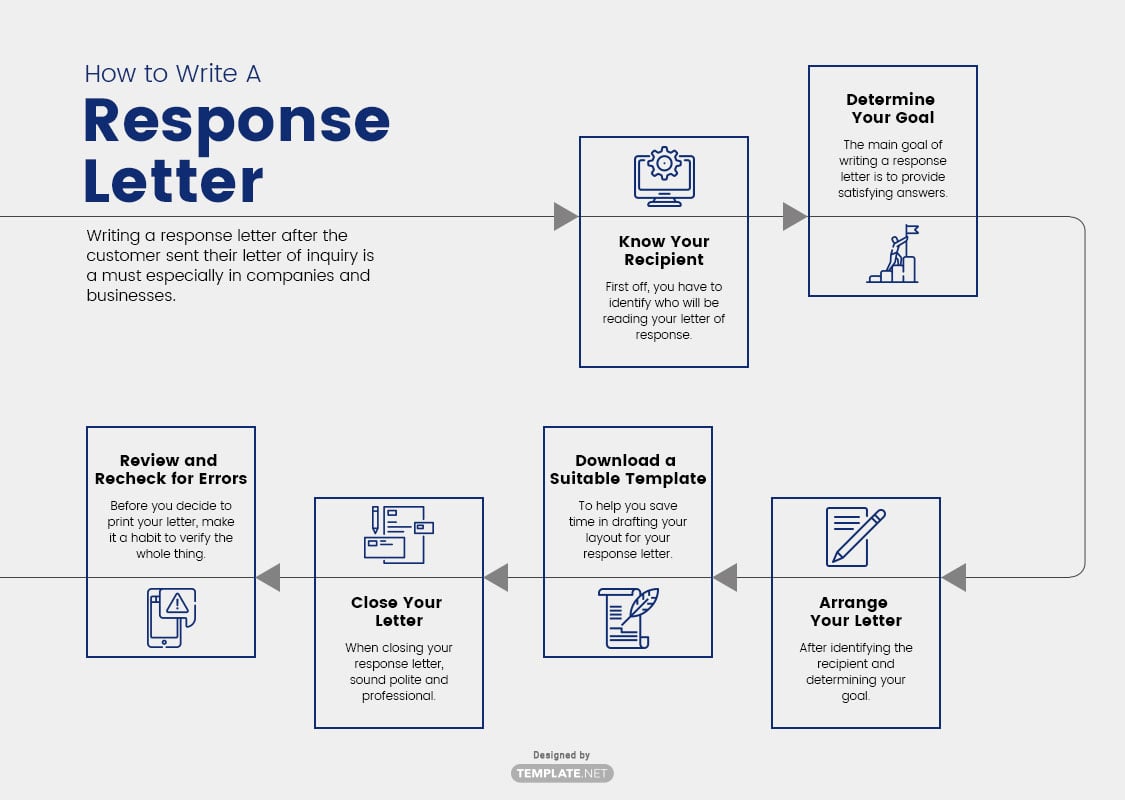
A response letter is a letter of reply that contains the answer or specific details asked in the previous letter. Common types of response letters are formal response letters, complete response letters, customer complaint response letters, response to complaint letters, and response to resignation letters.
Writing a formal response letter after the customer sent their letter of inquiry or letter of intent is a must especially in corporations and businesses. It is a sign that you value their concerns and inquiries. Not only that but also you are building a connection to your customers. The following guideline will give you useful tips on how to start writing a pleasing letter of response.
1. Know Your Recipient
First off, you have to identify who will be reading your letter of response. Get it on the complimentary close of the letter of inquiry that you received. You should also put it on the inside heading and the salutation of your letter. For easy delivery, do not forget to include the recipient's name or position on the top line of your envelope.
According to an article by Colorado State University, it is important to take note that when people write business letters, they must address the recipient by name to acknowledge their significance and value as a person.
2. Determine Your Goal
The main goal of writing a response is to provide satisfying answers and information regarding the inquiry, concerns, or even complaint letters. Clarity, conciseness, and appropriateness of your answers should be felt by the reader to establish effective communication.
3. Arrange the Information
After identifying the recipient and determining your goal, it is the time you arrange your letter in an organized and logical manner. The information in your letter must be easily understood. Avoid pretentious language and unfamiliar jargon. Keep it simple and straightforward. Colorado State University added, for the reader to digest the information quickly, start making a list of points that your letter will address and place them chronologically.
4. Download a Suitable Template
To help you save time in drafting your layout for your response letter, check out our website. This will provide you useful sample letter templates that contain suggestive contents. You can freely download them in any file format you want. Modify and personalize your chosen template depending on your needs.
5. Close Your Letter
When closing your response letter, sound polite and professional. After you write the body text, end your printable letter with "Sincerely" or "Thank you" with your name and signature.
6. Review and Recheck for Errors
Before you decide to print your letter, make it a habit to verify the whole thing. Re-read it and check the noticeable errors such as spellings, grammar, punctuation marks, and sentence structures. Correct those right away. Take note your objective is to present a concise and comprehensible document. Remove unnecessary words that you think will lead to misconception. According to a blog from www.inovies.com, proofreading is compulsory to obtain accurate information that strengthens the organization's reputation and productivity.
